After a fantastic day at Edo Wonderland, we were starting to feel a little tired and we were all ready for a relaxing experience at Hoshino Resorts KAI Nikko. However, after we had left Edo Wonderland and passed through the town of Nikko we started to enter some mountainous terrain and my adrenaline levels suddenly shot up several notches.
One of my favourite movies from The Fast and The Furious franchise is The Fast and the Furious: Tokyo Drift, mainly due to the drift racing scenes. One of my favourite scenes in the whole movie is the climactic race scene set in some treacherous switchback mountain roads, which I’ve subsequently disappointingly discovered were shot in Southern California.
In order to get to KAI Nikko which is located on Lake Chuzenji you have to take the Irohazaka access road. The Irohazaka Winding Road is one of the most fantastic roads I have ever experienced with 48 hairpin bends. I couldn’t stop smiling for the whole time I was on this road, although the edge was taken off slightly by the fact I was travelling in a minivan rather than a Nissan GTR.
At the end of Irohazaka Road you pop out at the township of Lake Chuzenji. We took a short detour to have a quick look at Kegon Falls. The next day we went back to check it out properly.
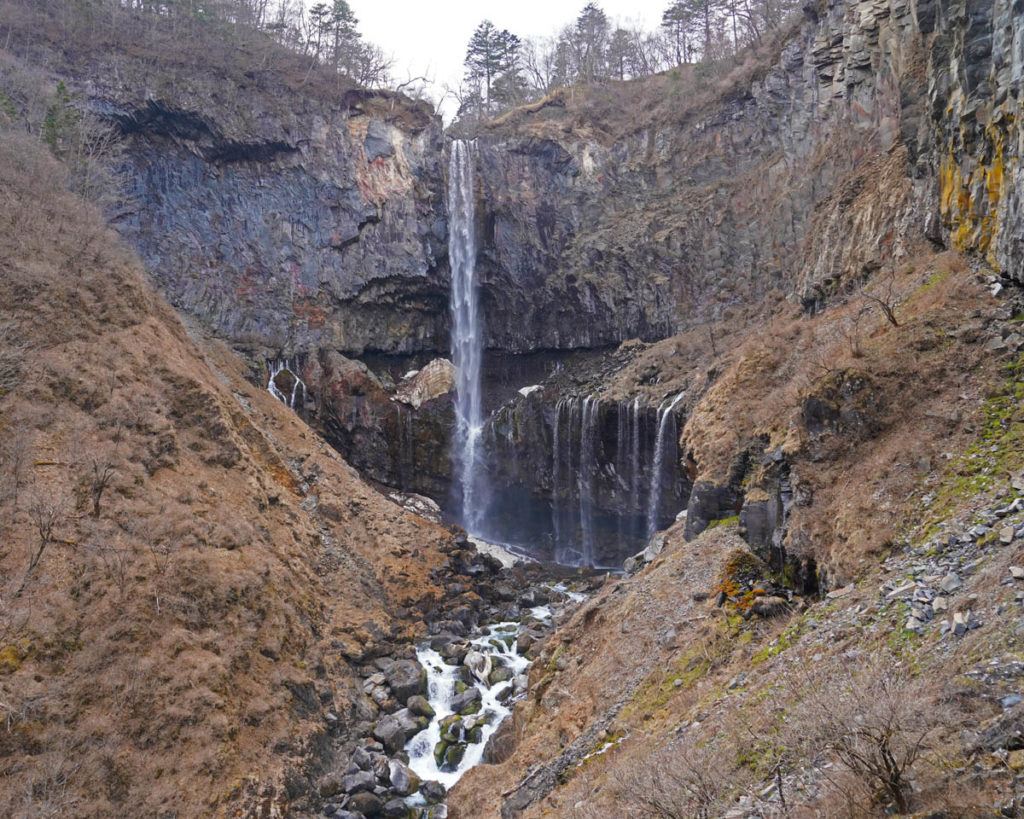
While there, our guide suggested that I should try the incredibly tasty trout (Ayu, Iwana and Yamame) on a stick that had been cooked over hot coals from a vendor near the entrance to the falls. The rest of the family had some delicious soft-serve ice-cream from another shop in the open-air marketplace at the top of the falls. They persuaded me to taste some ice-cream which, while admittedly yummy, wasn’t a great combination with the grilled trout.
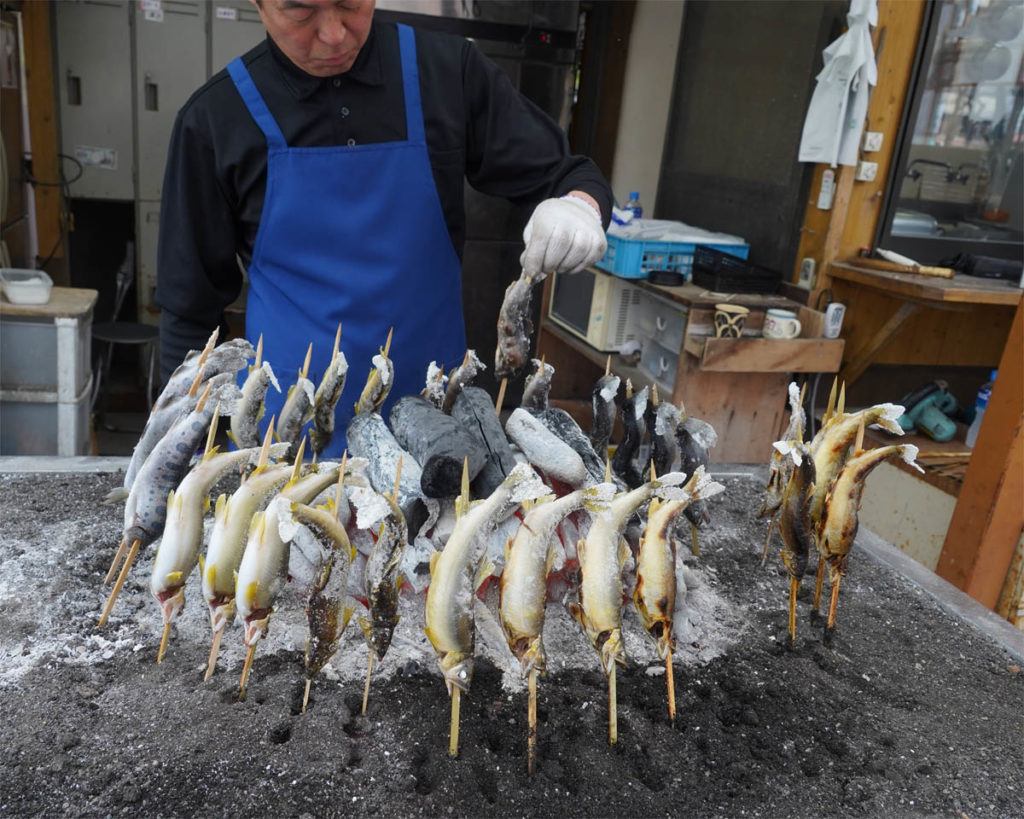
After our short stopover at Kegon Falls, it was an easy five-minute drive to KAI Nikko. As we drove up to the entrance to KAI Nikko, our kids were thrilled to see some snow that had been swept to the side of the road. The friendly staff helped take our luggage inside and we then sat down in a lobby overlooking Lake Chuzenji to enjoy a complimentary drink. We all immediately started to relax and unwind and started to look forward to our two-night stay at KAI Nikko. Note that our stay at KAI Nikko was sponsored by Hoshino Resorts.
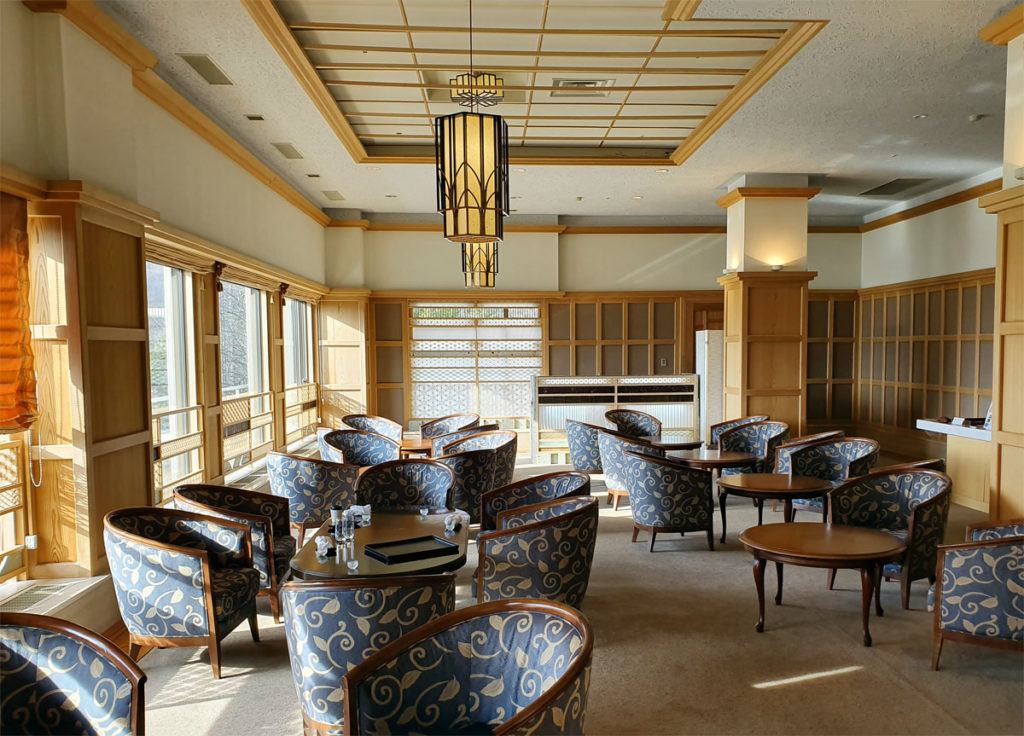
Join the Japan Travel Planning Facebook Group

Disclaimer: This article contains affiliate links. If you book after clicking on one of these links then we may receive a small commission at no extra cost to you.
What is a Hoshino Resort?
I first discovered Hoshino Resorts by accident, when I was researching tattoo friendly onsens. I reached out to Hoshino Resorts to request further information on whether they were tattoo friendly. This initial contact subsequently led to us being invited to stay during our recent visit to Japan in four different Hoshino Resorts out of their 15 luxury ryokans which are located across Japan. We stayed in KAI Nikko, KAI Hakone, KAI Kinugawa, and KAI Matsumoto.
Overall we had a fantastic time at each of the Hoshino ryokans. Each resort offered unique location-specific food, architecture and activities designed to immerse guests in the rich cultures of the regions in which the properties are located. What was common between all resorts was that each was a true luxury ryokan onsen experience.
We greatly enjoyed their kaiseki menus which each featured regional food specialities. While some dishes took us out of our Western palate comfort zones, most were delicious and all were artfully presented! We were also pleased to discover that they also offered children’s menus which are simpler in flavour. Our youngest son really enjoyed the meals from the children’s menu, such that our older son requested to shift from the adult to the children’s menu for his dinners.
Each resort had a different style of onsen, which included a variety of both indoor and outdoor baths to experience. Men and women bathed separately, and in some of the resorts, they alternated the men’s and women’s areas at different times of the day to enable visitors to the resort to visit both bathing areas. Usually they were quite different so this way you could have the full experience!
Each Hoshino Resort also had a different set of activities based on local customs and history. Activities we participated in ranged from learning about local pottery, local wine tastings, musical performances, making local crafts such as drink coasters and much more! Two of the unique aspects of Kai Nikko were kanuma kumiko (a regional style of wood latticework) and Nikko geta (traditional straw sandals with wooden soles).
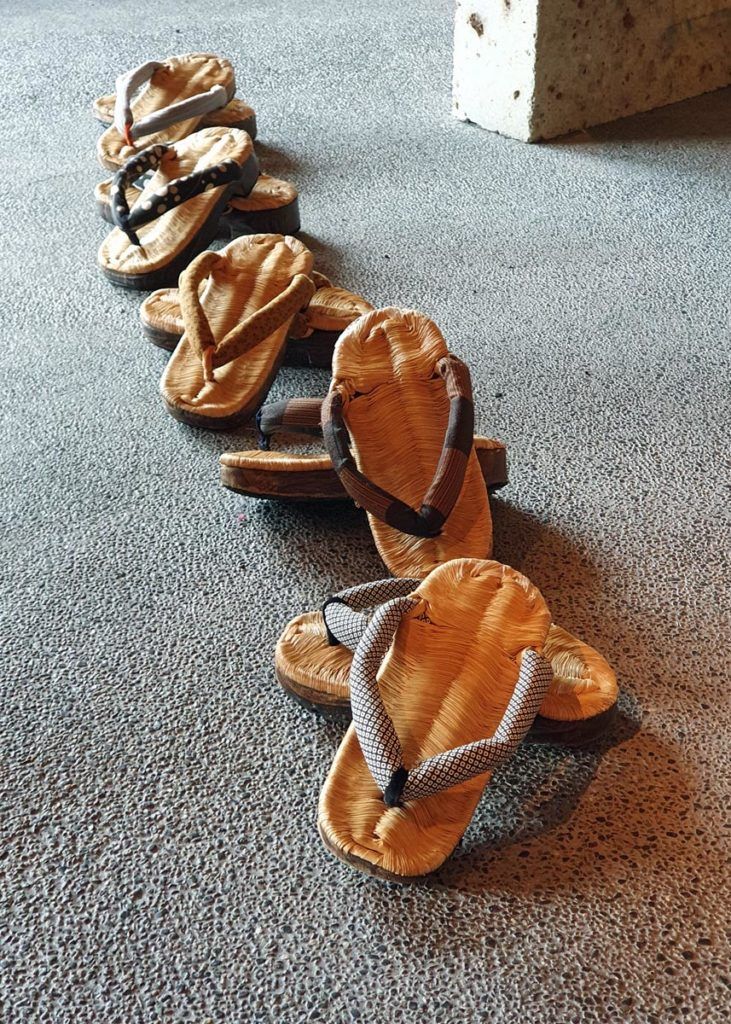
Where is KAI Nikko Ryokan?
KAI Nikko is located in the township of Lake Chuzenj which is part of the Nikko region. The township of Nikko is located approximately 150 km north of Tokyo. Lake Chuzenji is a further 25km to the west of the town of Nikko.
Lake Chujenzi is easily accessible using a combination of train and bus. If you want to use your JR pass, the fastest option is to catch a shinkansen from Tokyo to Utsunomiya Station. This takes about 50 minutes from Tokyo Station. Then, from Utsunomiya Station take the JR Nikko line to Nikko Station. Total journey time is about 2 hours 15 minutes to Nikko. After you arrive in Nikko, catch the Tobu bus from Nikko to Lake Chuzenji (using either cash or Suica card) which takes another 45 to 50 minutes. When you arrive in Lake Chuzenji you can either use the free shuttle service or enjoy a short walk to KAI Nikko.
Alternatively, you can purchase an All Nikko Area Pass through Klook for a 4 day period which includes train transport from Tokyo to Nikko (using the Tobu Line) and Lake Chuzenji (using the Tobu bus service).
See the map below for transport options for travel from Tokyo to Lake Chuzenji.
KAI Nikko Resort Overview
KAI Nikko overlooks Lake Chuzenji. You access the resort from a private driveway which takes you from the road running beside the shores of Lake Chuzenji. We were immediately struck by the natural setting of the hotel.
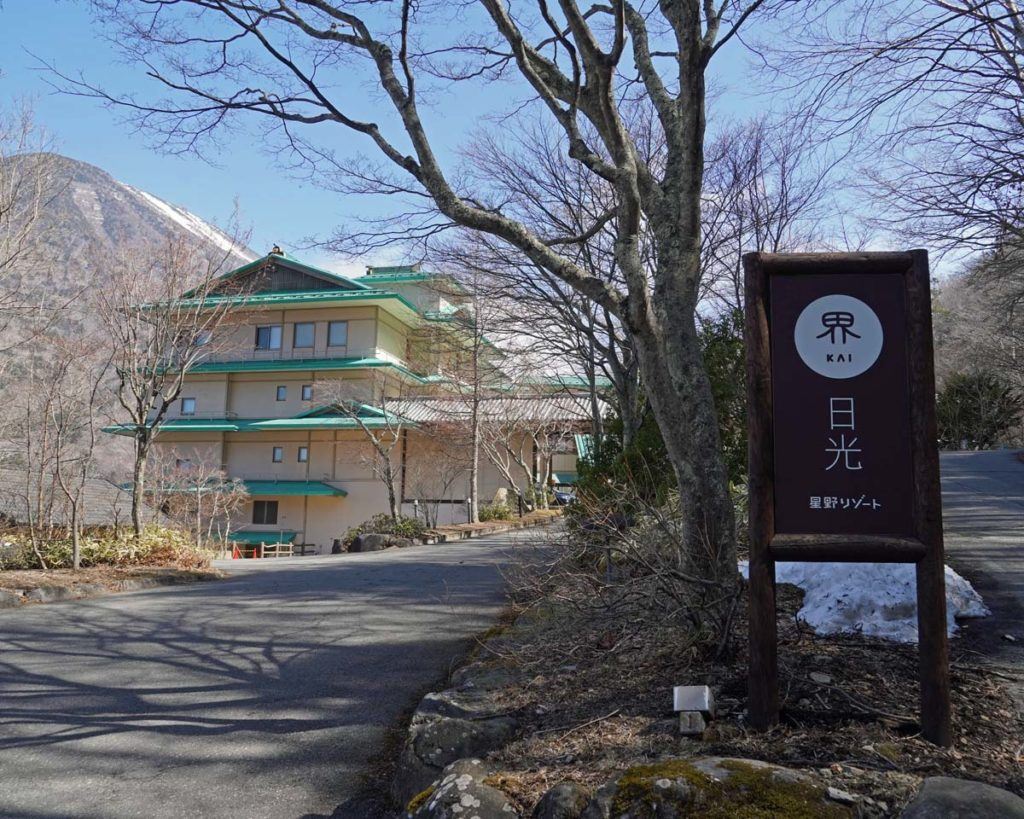
While KAI Nikko onsen hotel has buildings either side of it, the hotel has forested hills behind it and many rooms look over Lake Chuzenji with mountains surrounding the lake so you feel as if you are surrounded by nature.
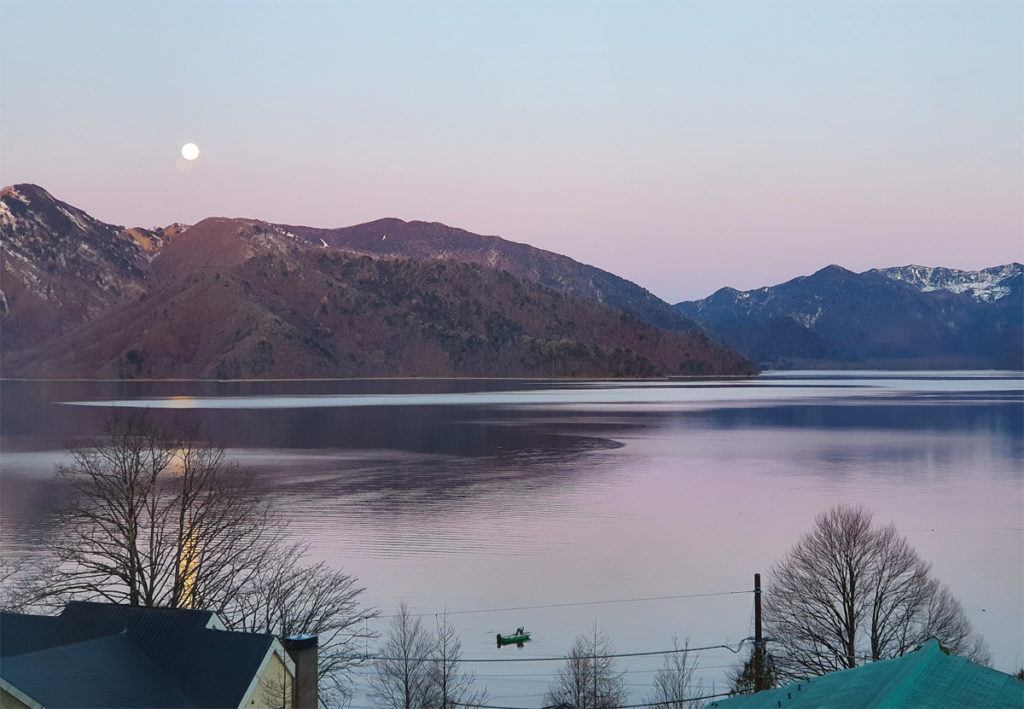
KAI Nikko offers a contemporary and luxurious take on a traditional Nikko ryokan. There is evidence of regional craftsmanship throughout the hotel, most notably the wood latticework.
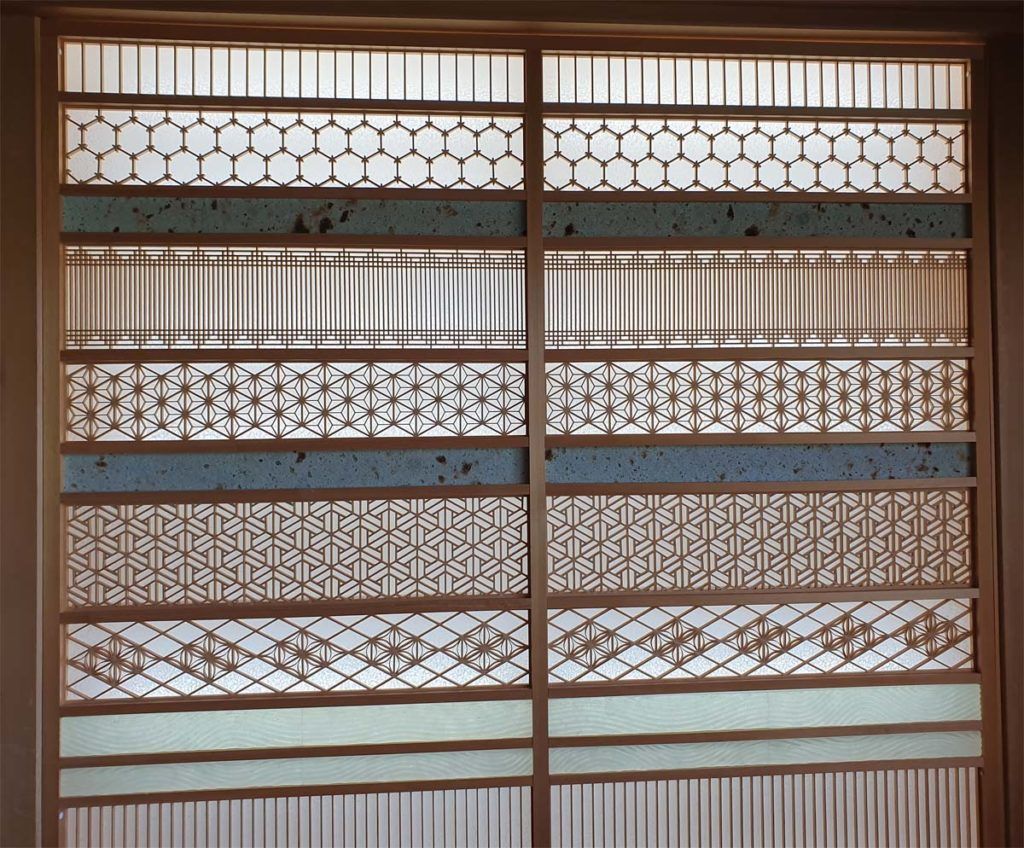
KAI Nikko also has expansive common areas for guests located near the reception desk. In this area you can sit and relax, read some books and access the self-service tea and coffee station.
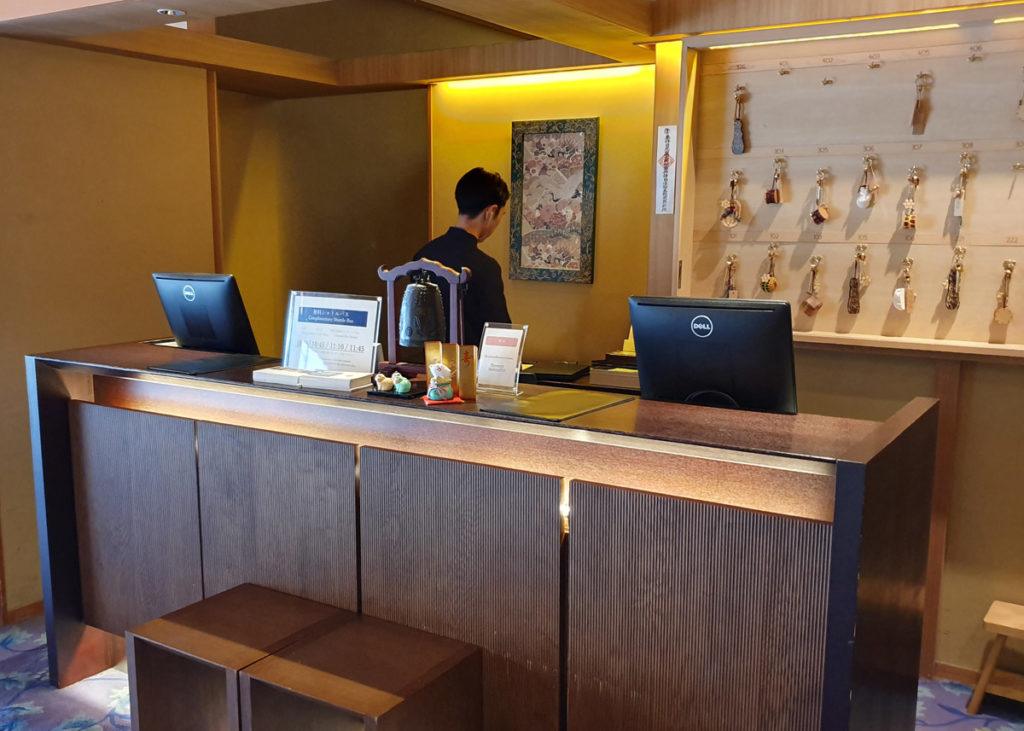
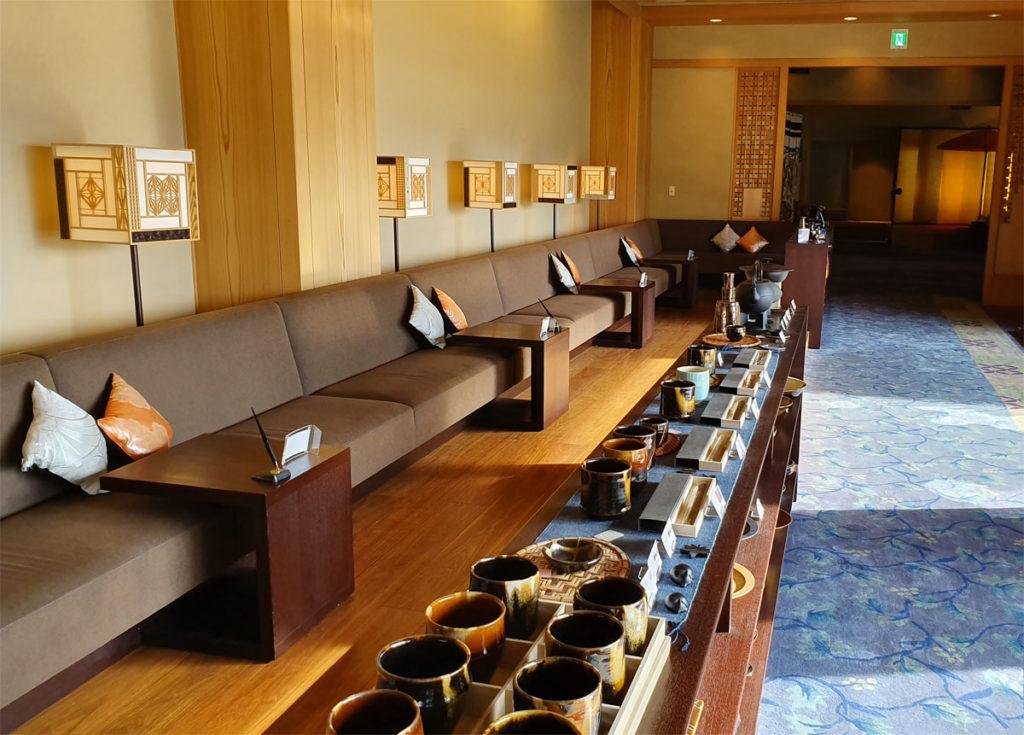
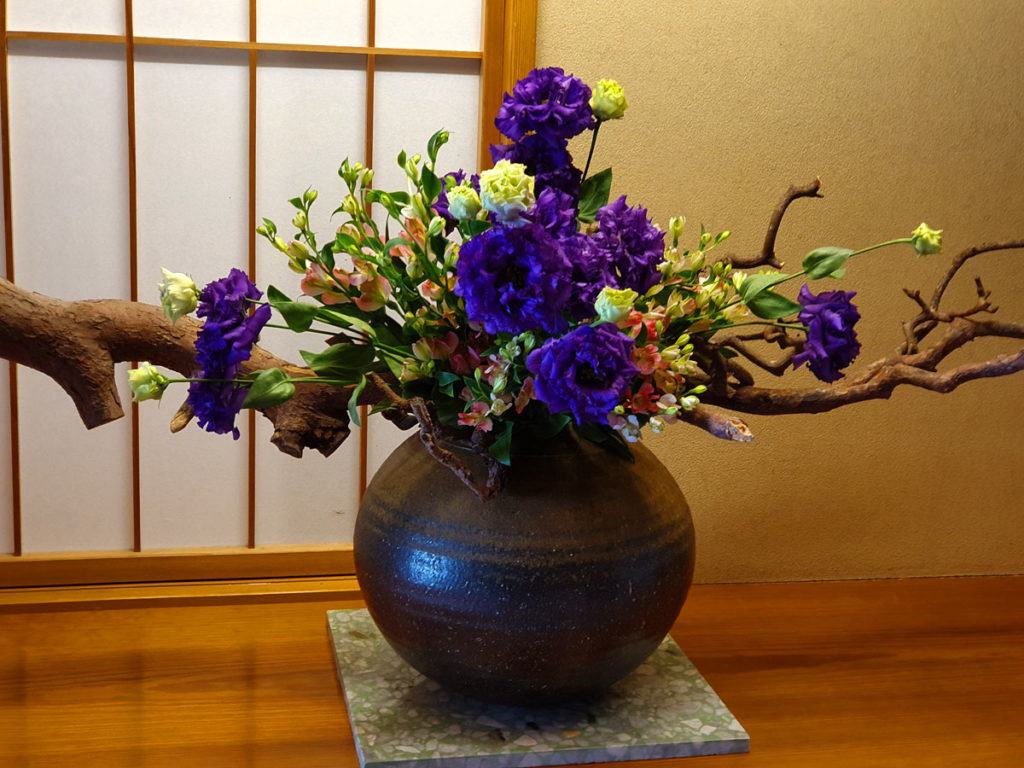
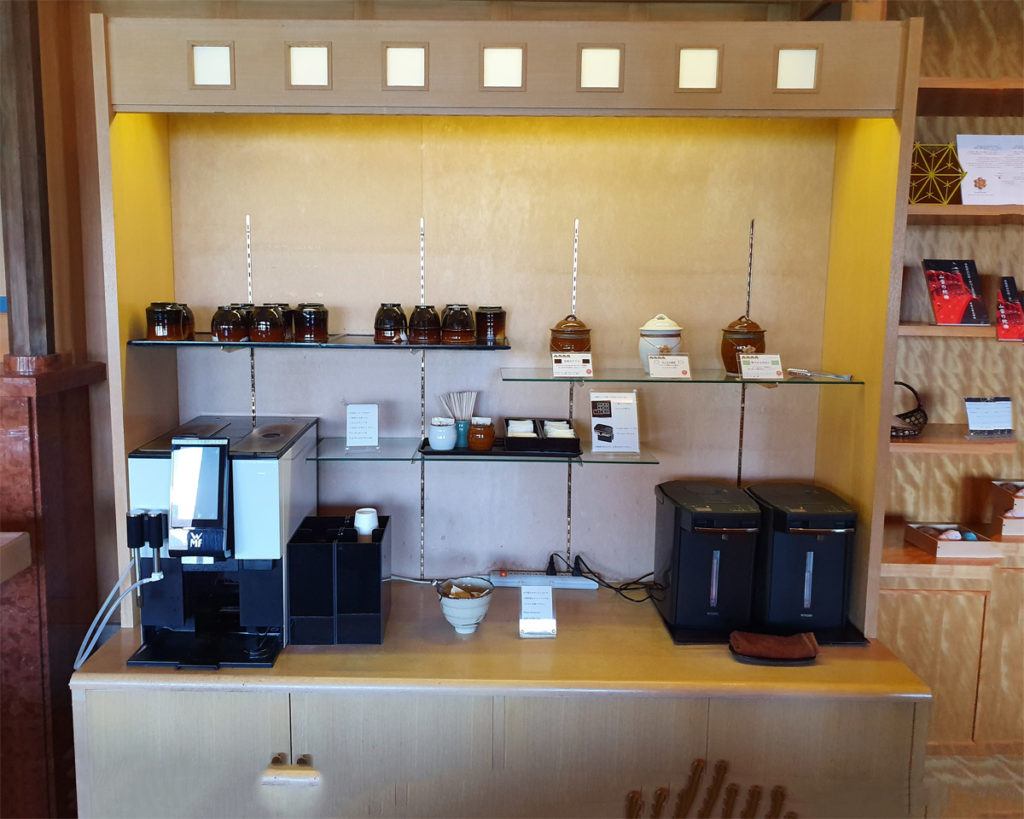
The KAI Nikko gift shop showcases a great range of regional handicraft such as lamps made from wood latticework, drinks and regional foods such as strawberries. Nikko is part of the Tochigi prefecture which is Japan’s biggest producer of strawberries and I found the freeze-dried strawberries very hard to resist.
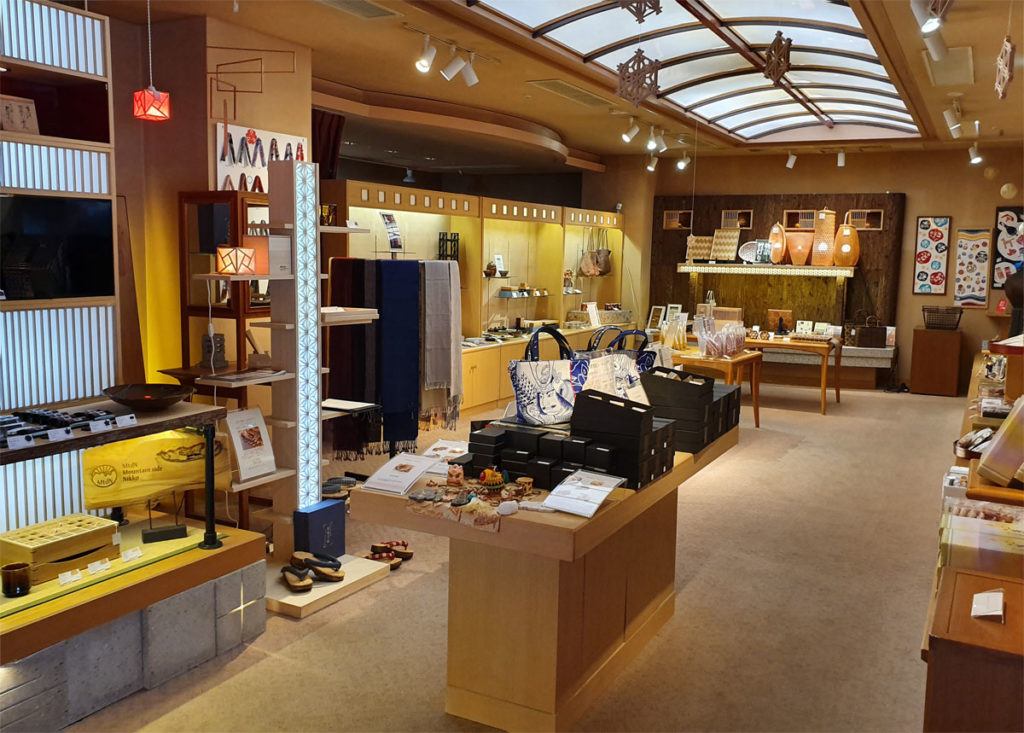
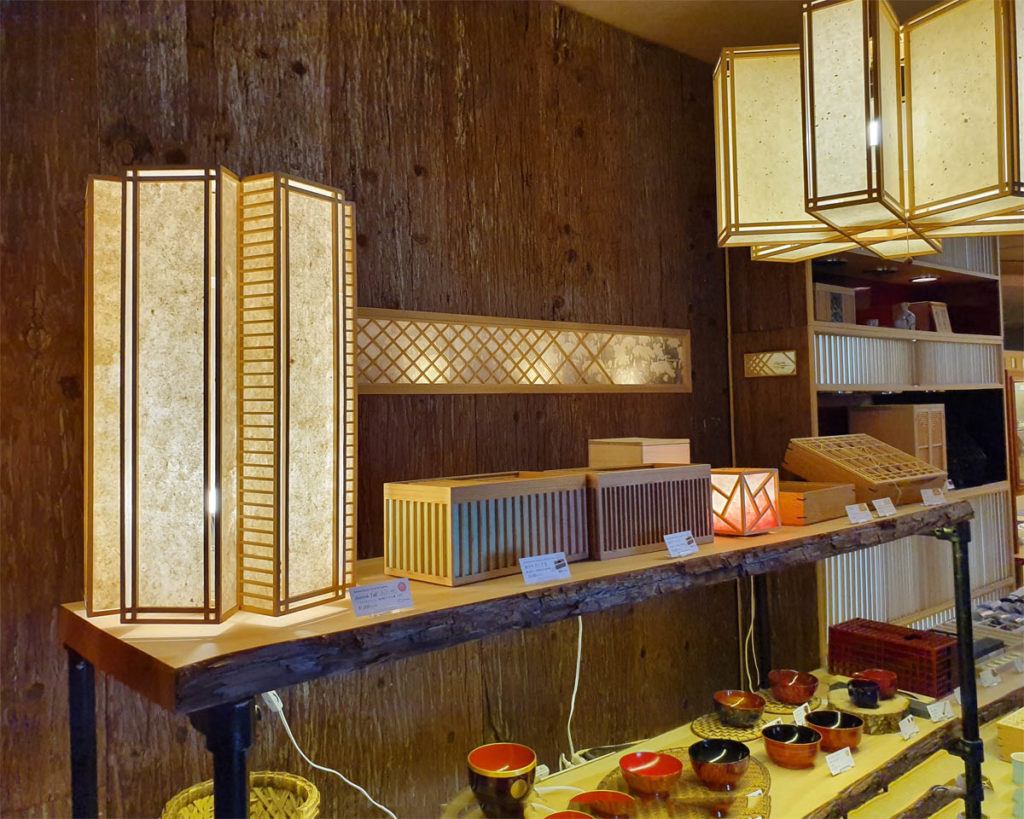
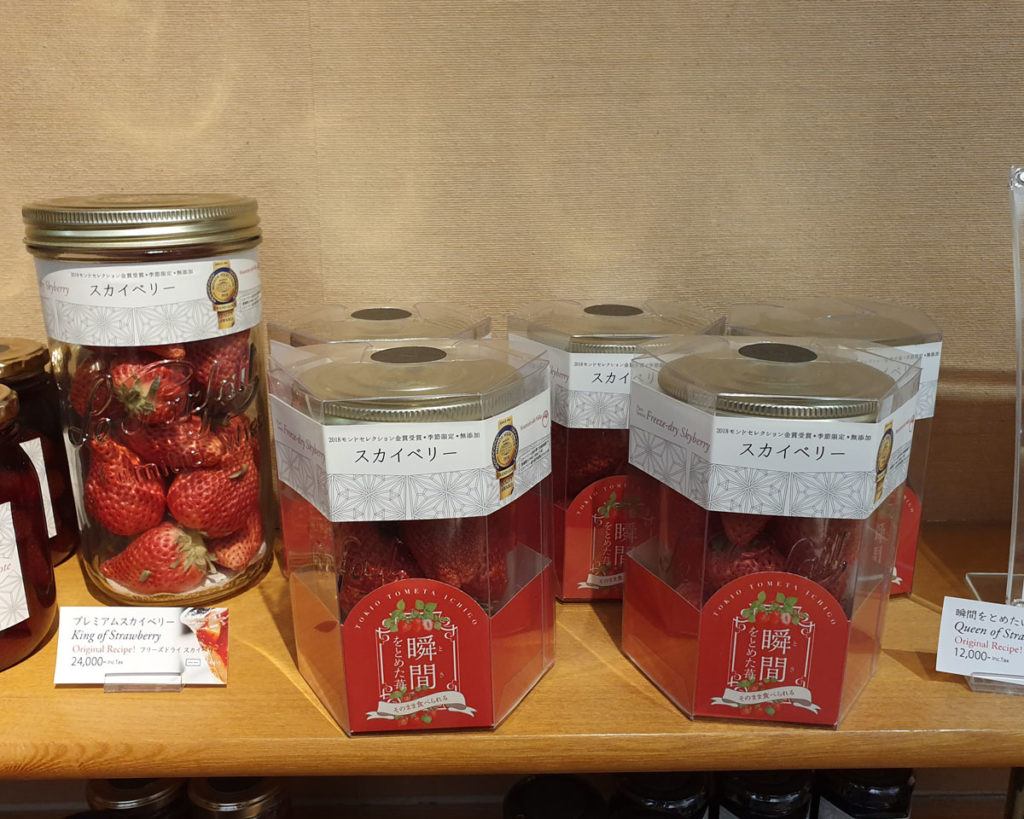
Activities at Kai Nikko
We had a great time participating in three different activities while staying at Kai Nikko – Chaya, woodcraft coaster making, and a dance performance which showcased the history of Nikko geta (Japanese wooden sandals).
The first experience that we enjoyed was Chaya (or Japanese style tea house) which in our case meant we got to taste one of my favourite fruits – strawberries. Our family feasted on Tochigi strawberry dumplings served with green tea.
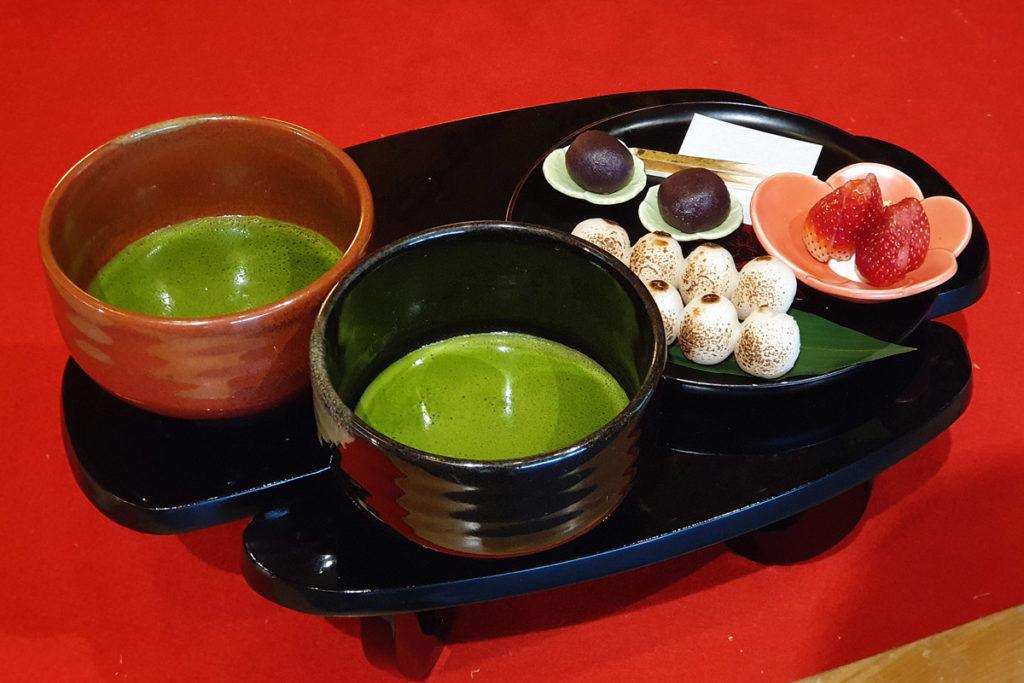
The second experience was to make some latticework wooden coasters. Each of us was given a kit from which it was possible to make two different latticework designs. We made quite a lot of mistakes and had a lot of laughs. It was lucky that we had a staff member from Kai Nikko to guide us so that we could make a coaster that actually looked good.
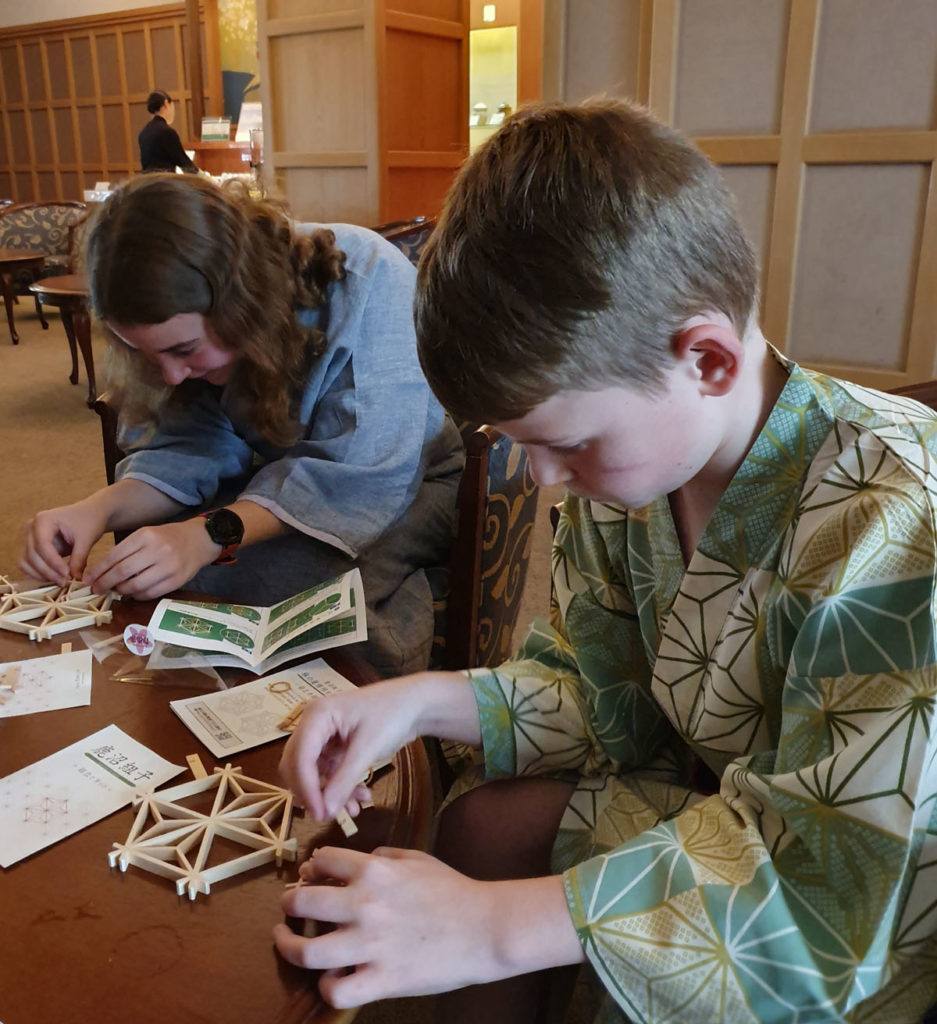
The third experience was a performance by two staff members which told the story of the Nikko geta – traditional straw sandals with wooden soles that have been crafted in Nikko for 400 years.
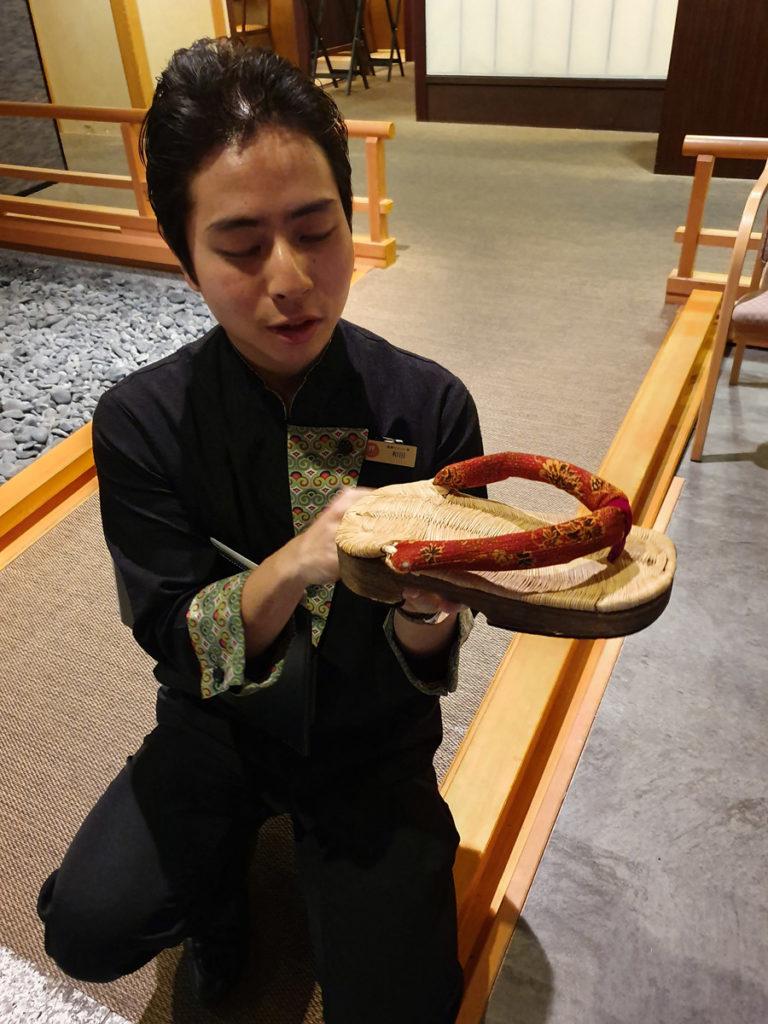
The performance was in Japanese with some English explanations and incorporated dance, stamping, clapping and chanting. The audience participation was a terrific additional element. I still can’t get the words of one of the chants out of my head as it was very catchy – Don-pa, Don-pa, Don-pa, Don!!! To help us further understand the performance, we were provided with a guide written in English.
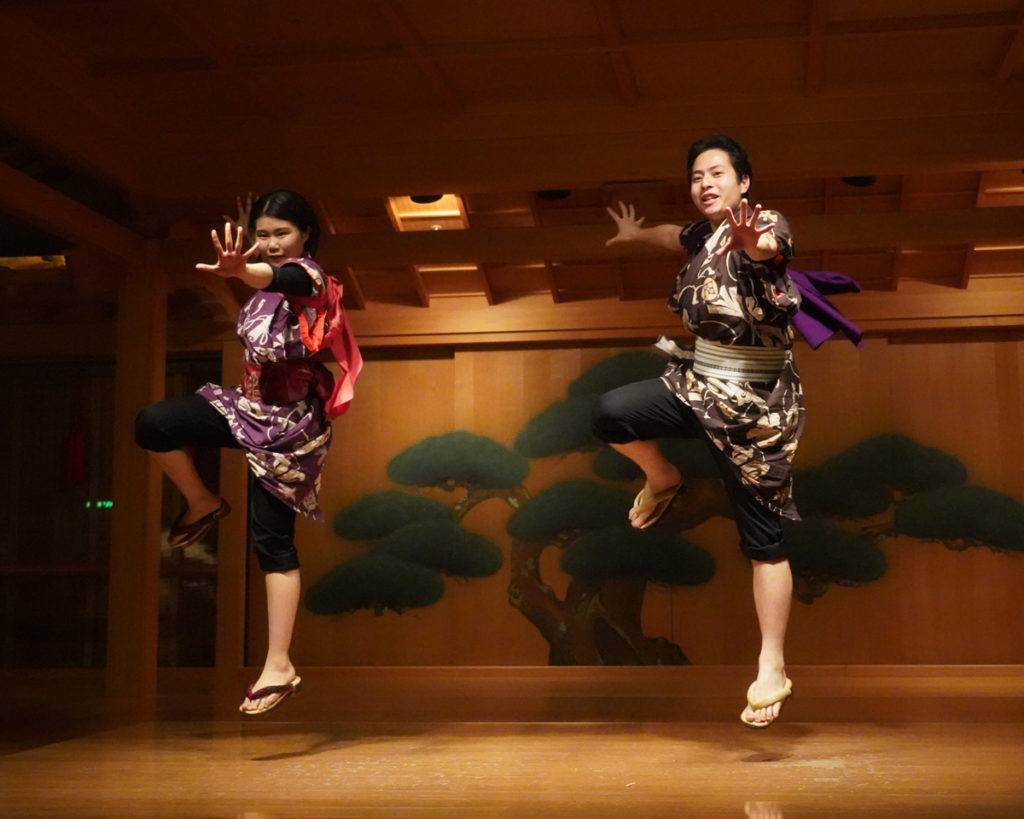
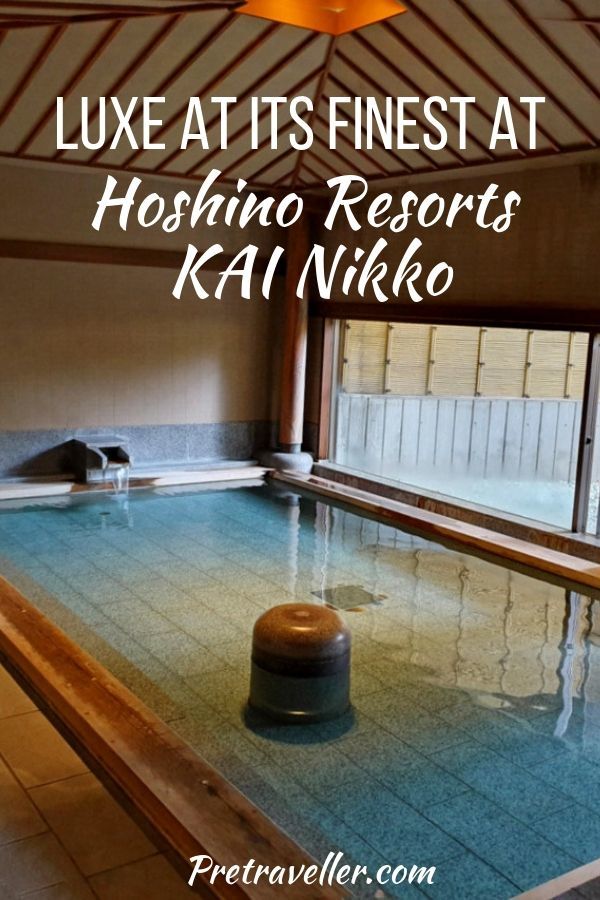
Overview of KAI Nikko Guest Rooms
There are 33 rooms at Kai Nikko each with over 60m2 of space. Many of the rooms offer views of both Lake Chuzenji and the mountains while a number of rooms offer mountain views only. The smallest lake view rooms are 60m2 and accommodate 1-2 guests. There are also lake view suites for 1-4 people that are 125m2 in size. The largest lake view suites are 170m2 in size and are for up to 6 people. For our family of 5, we had a smaller lake view room and a larger lake room suite.
In the entryway (or genkan) to our room we swapped our shoes for slippers, divested ourselves of our luggage, and stepped into the room. The first thing we noticed when we entered our room was the spectacular view over Lake Chuzenji.
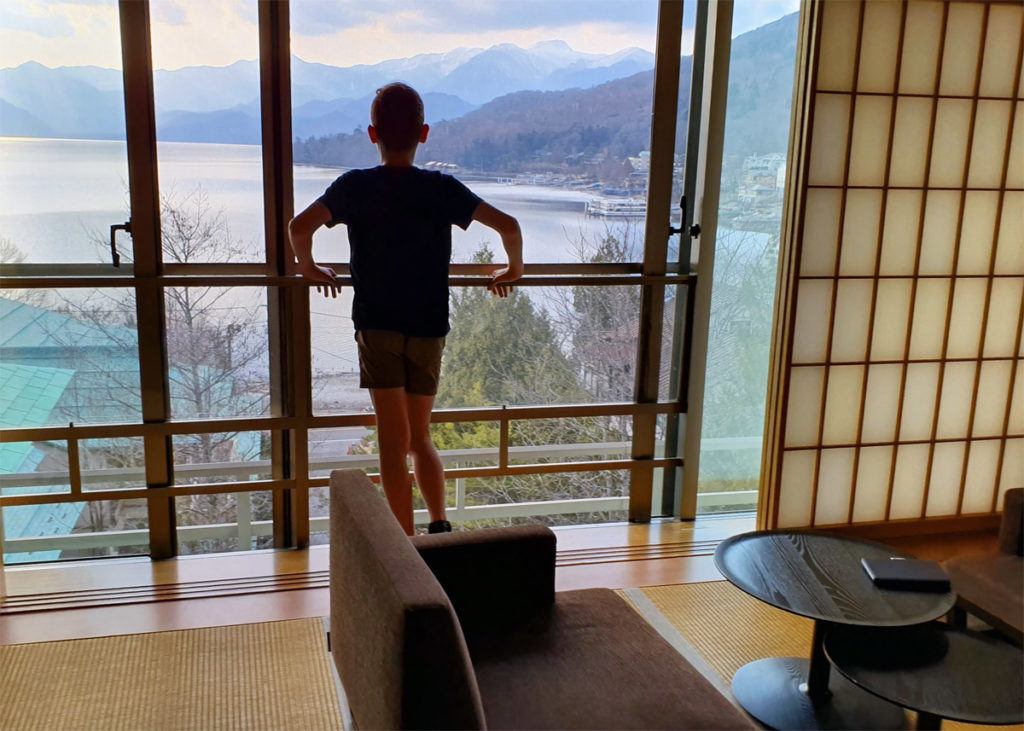
As an aside, while trying to take photos of this spectacular view, I managed to drop my camera lens cap on to the roof outside of our room. I sheepishly approached the reception desk with my problem and they happily and safely retrieved the lens cap and returned it to me during dinner. This was just one of the numerous examples of the warm and helpful customer service we experienced while staying at Kai Nikko.
The beds in Kai Nikko were set low to the floor to look like traditional Japanese bedding but actually used mattresses. The mattresses struck the perfect balance between offering the correct support while being soft enough to sink into. Also, notice the decorative latticework (kunuma kumiko) in the bed head in the picture below.
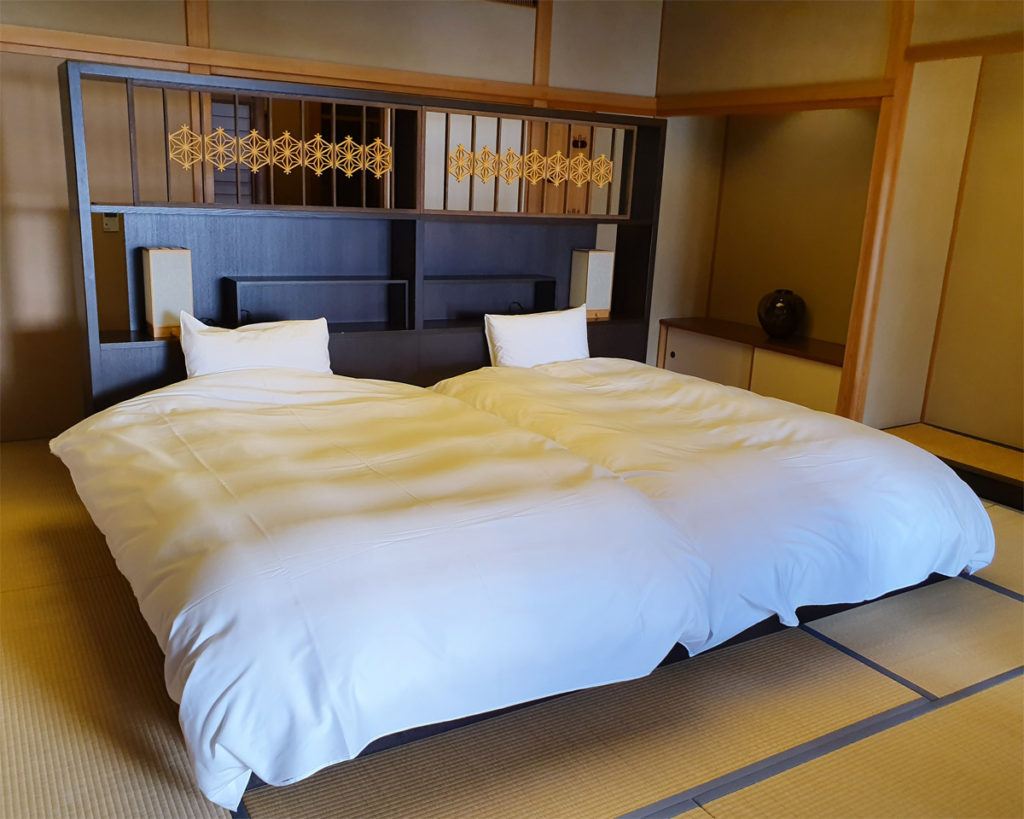
It was an absolute pleasure to relax on our bed while enjoying the sunset over Lake Chuzenji.
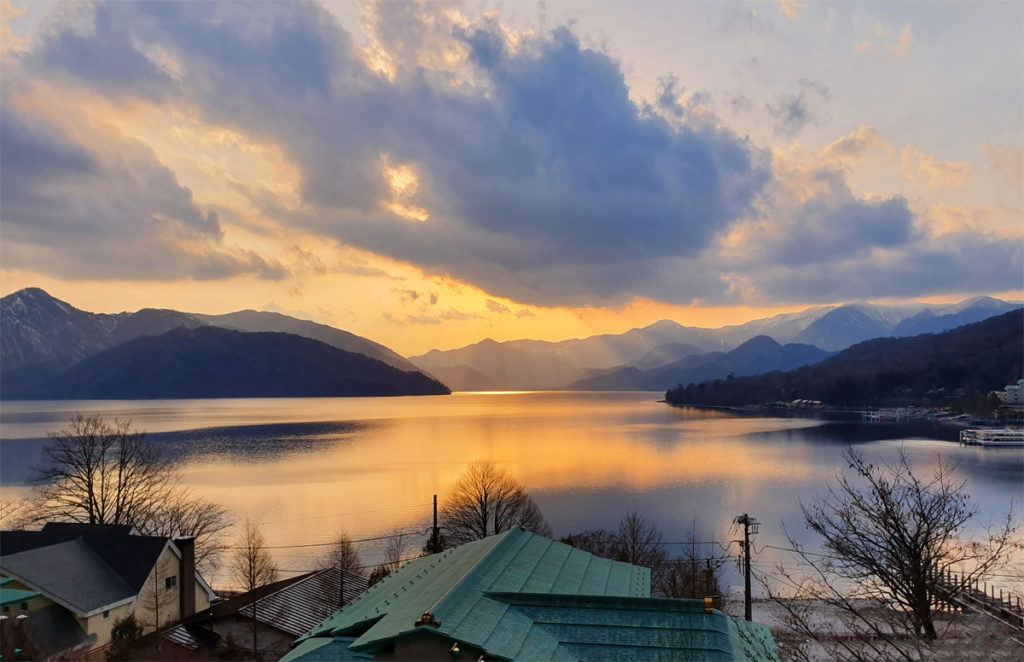
The photo below shows how the lake view suites are furnished with a dining area in the foreground and a sitting room overlooking the lake in the background. The smaller lake view rooms don’t have the larger dining area from the suite but retain the beautiful sitting area.
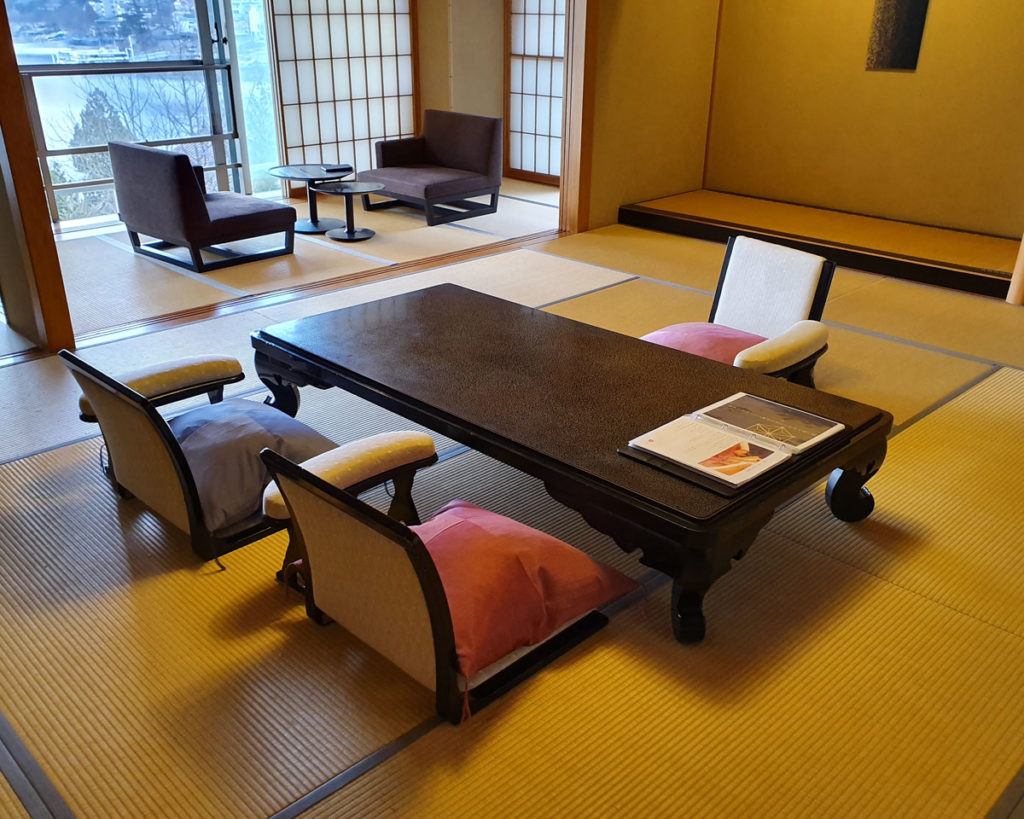
Our bathroom was fitted out with a luxurious marble bathtub with timber on the walls of the room. The room also had a bathing bucket like you would find in onsen to wash and acclimate yourself to the water temperature before hopping into the bath. Other rooms in the resort have cedar bathtubs.
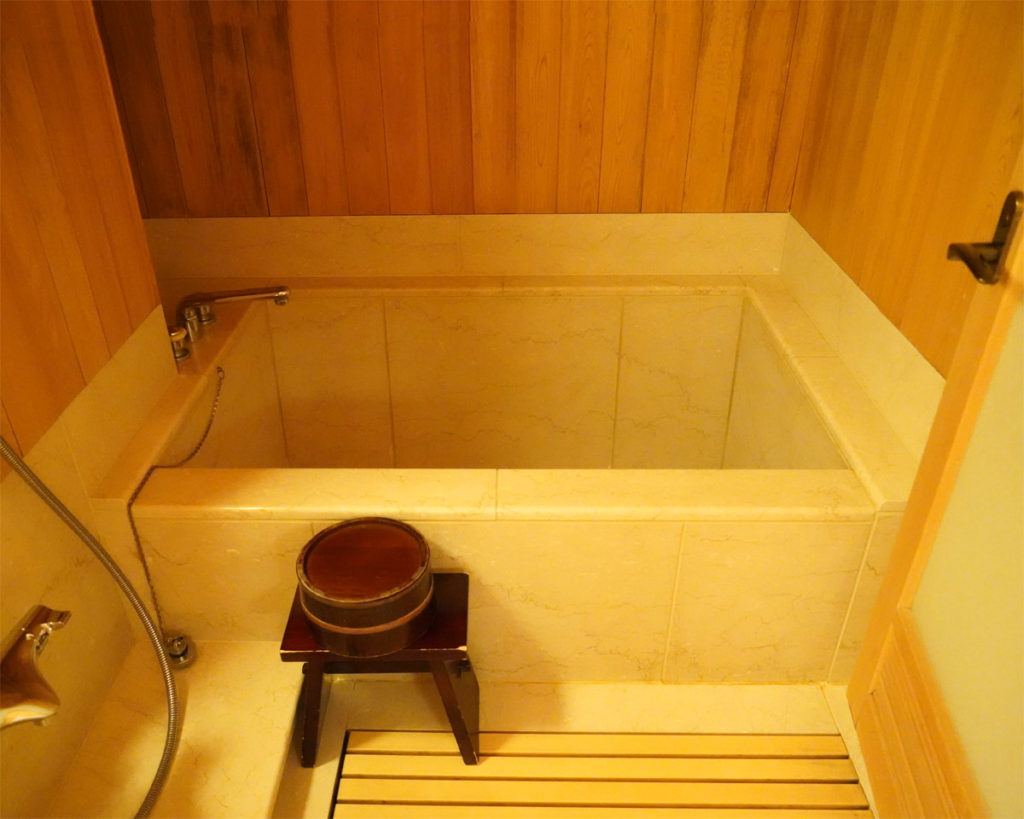
The bathroom also has a large vanity with double basins and comes with all the bath amenities you would expect of a luxury resort, including a hair dryer, shampoo, conditioner, skin lotion and soap, toothbrush, toothpaste and razors. The room also has a TV, phone, safe box and air purifier with humidifying function.
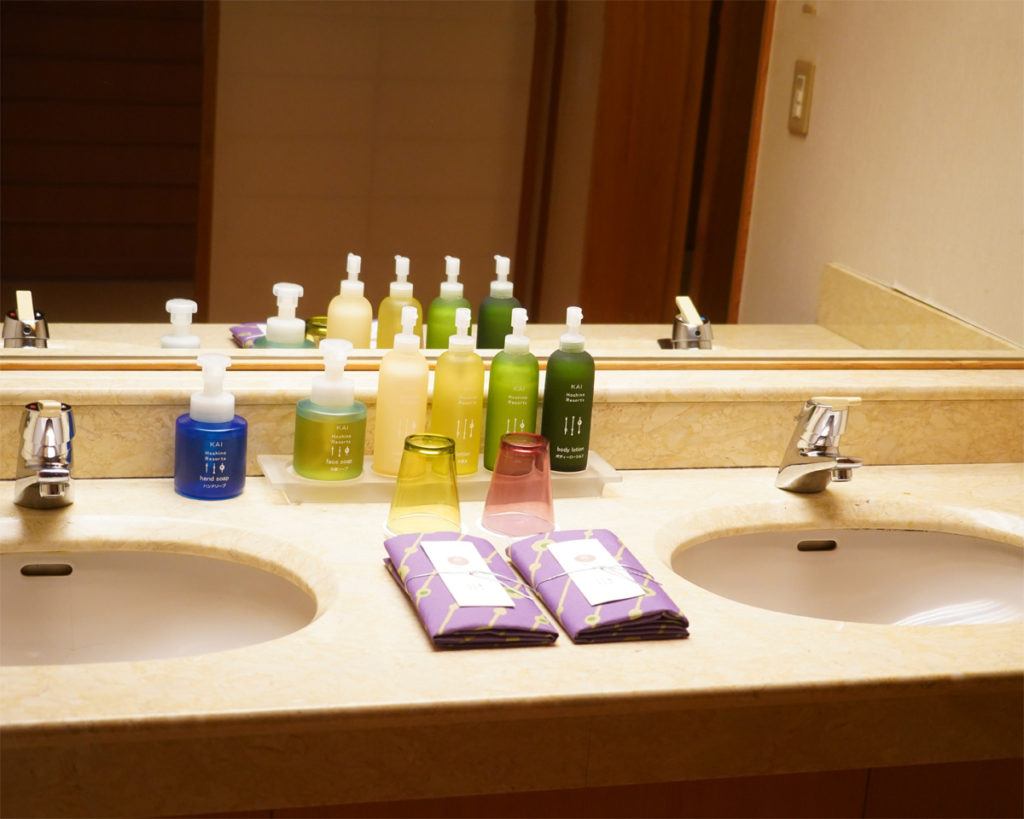
In each of the rooms, there are also tea making facilities which include complimentary local snacks. There is also a minibar filled with a selection of local alcoholic and non-alcoholic drinks and snacks available for purchase.
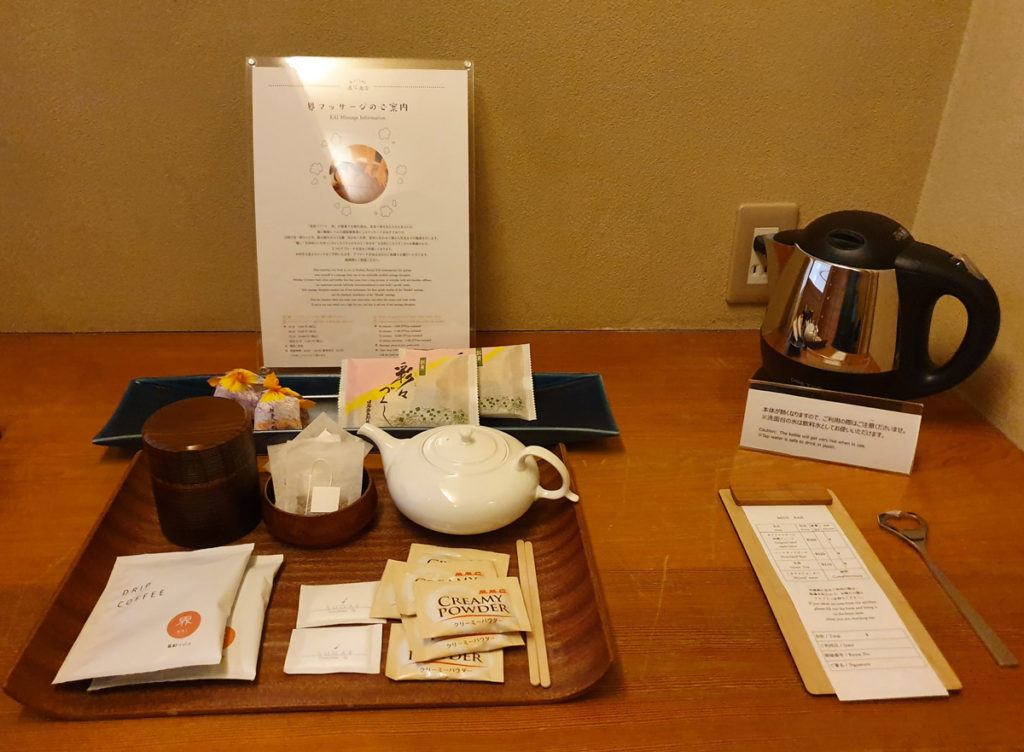
Kai Nikko Restaurant
After relaxing in our room we changed into our yukatas and went to dinner at Kai Nikko’s restaurant. Standard room prices at KAI Nikko include half board which means that your breakfast is included in your room price. You can separately book in to experience a kaiseki multi-course dinner which features the local cuisine of the Tochigi region. We entered the restaurant through a beautifully crafted entranceway which in the day time is full of natural light.
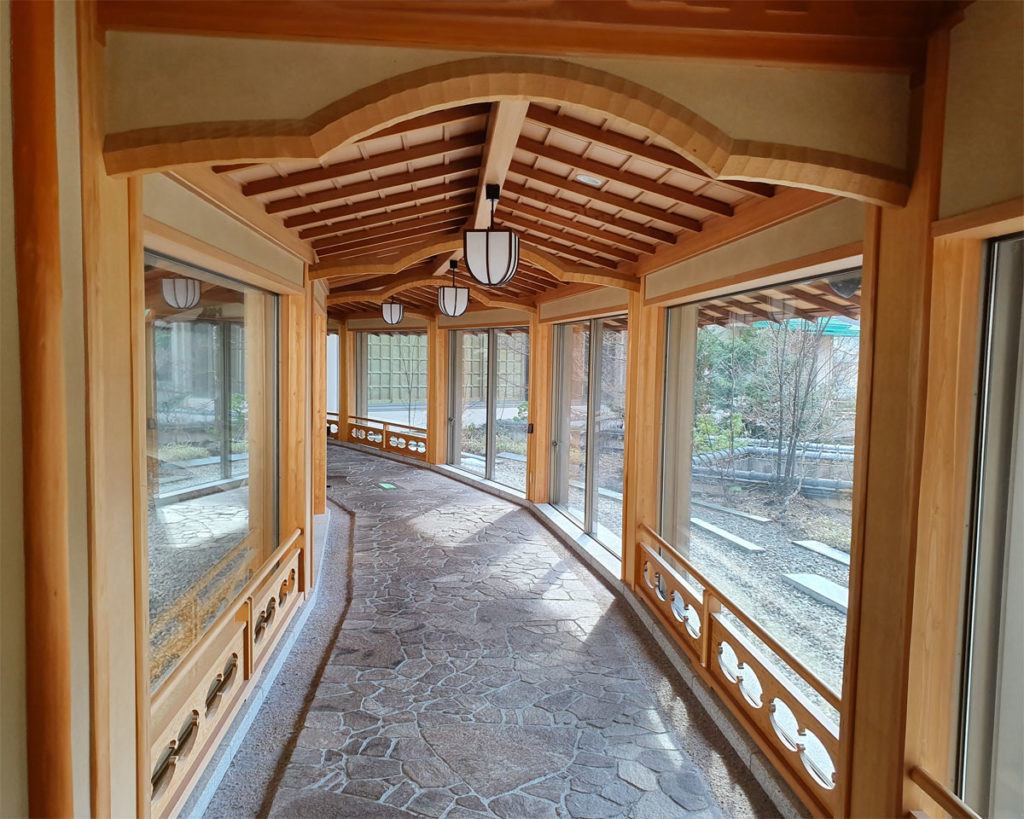
At Kai Nikko, the menu showcases a regional speciality known as yuba (or jellied tofu skin) which was presented in many and varied ways. Over the two nights we were there, we also got to enjoy a wide range of delicacies including sashimi, tempura, and a showpiece course of beef Shabu Shabu steamed in an Oya stone box. Oya stone has a wonderful texture and warmth and is made as a result of volcanic eruptions. It can only be found in the Oya district of Tochigi so it is also another regional speciality.
KAI Nikko Restaurant Kaiseki Dinner
We stayed at Kai Nikko for two nights and the kaiseki dinners were one of the highlights of our visit! The kaiseki dinners really highlighted regional foods and seasonal flavours. All courses were beautifully presented and were further enhanced by the dishware they were presented on. They were such a feast for the eyes that we sometimes almost felt guilty eating them. We also loved the taste of the vast majority of dishes on the menu although some challenged our western palates more than others.
Below is a photo of the dinner menu from the first night we stayed at Kai Nikko, followed by some photos from each course for your enjoyment!
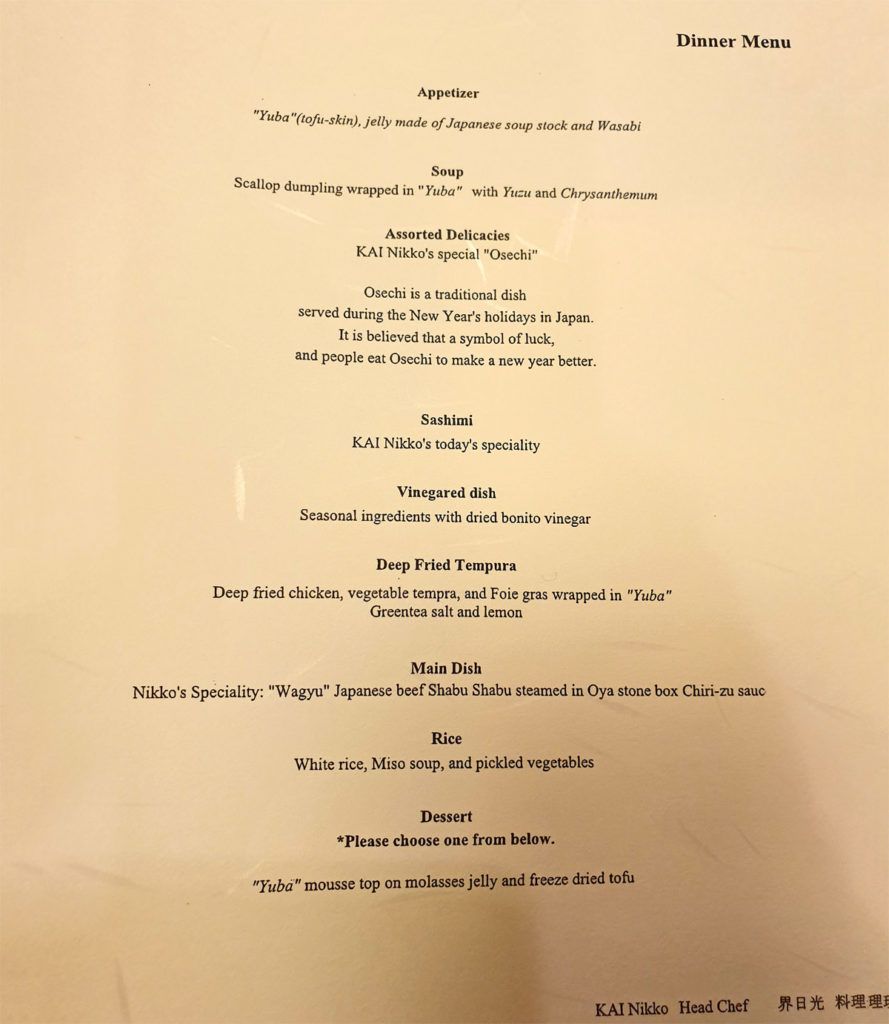
Our first course was yuba jelly. This was the first time we had ever tried yuba and also one of the first times we had ever tried a savoury jelly so our tastebuds experienced a bit of a surprise on first tasting. After first tasting, the taste was quite pleasant and the dish was beautifully presented.
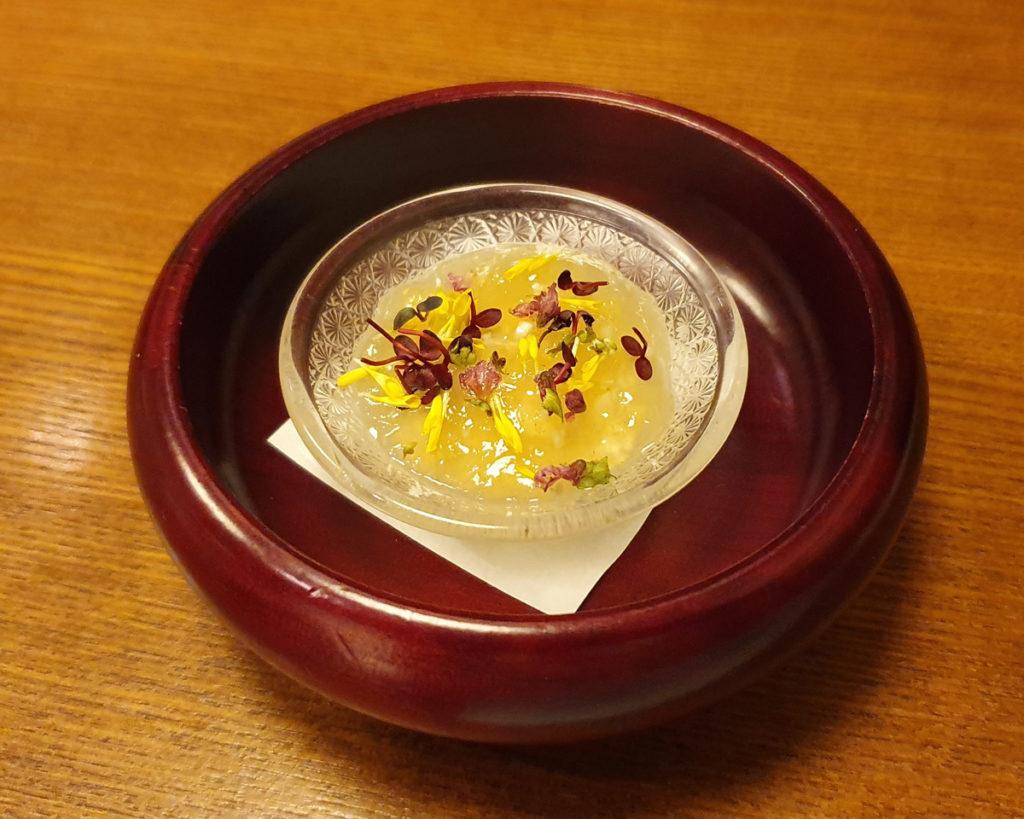
The next course was a scallop dumpling wrapped in yuba. The texture and taste of the scallop dumpling was soft and subtle and the yuzu added a really enjoyable citric element to the fish. I love citrus so the yuzu really made the dish for me.
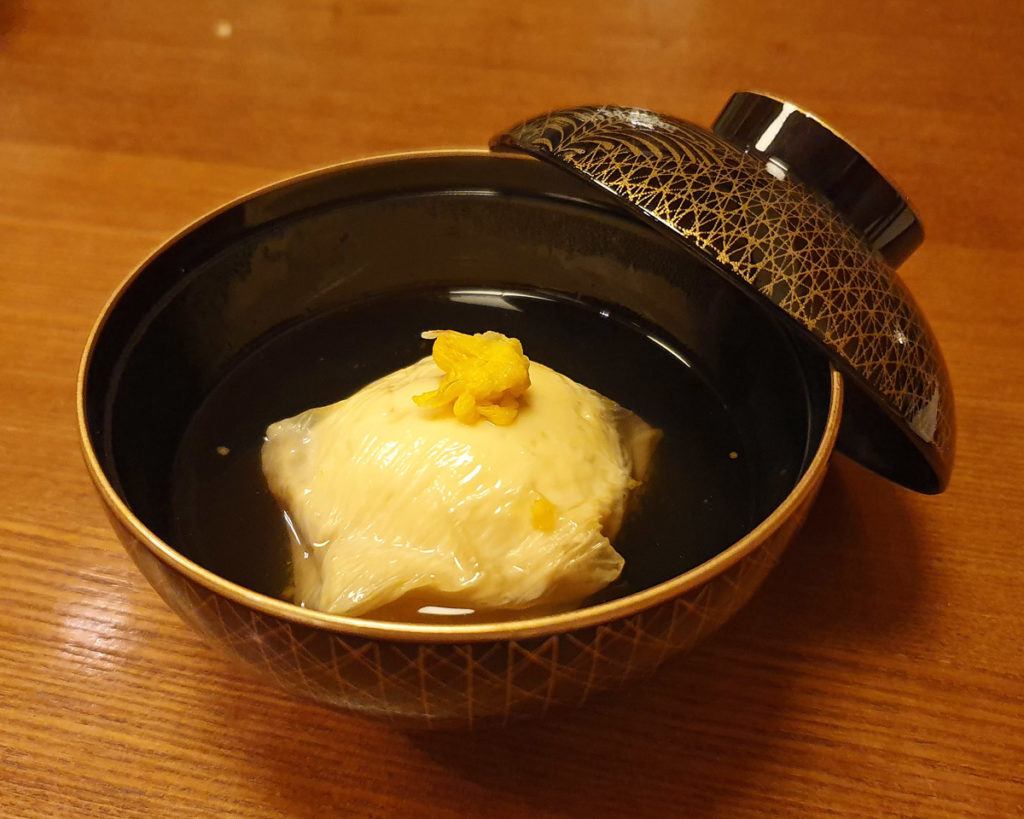
The sushi in the stacked dishware to the rear left of the picture below was some of the freshest sushi we experienced on our whole trip. The osechi (or traditional Japanese New Year foods) to the right of the picture were quite surprising in terms of the diversity of flavours including one which was an intensely sweet orange flavour. While tasty on its own this flavour was a bit of a shock when eaten while sampling a variety of savoury foods. I also loved the dishware that the osechi were presented in which featured the three wise monkeys from the Toshugu Shrine in Nikko.
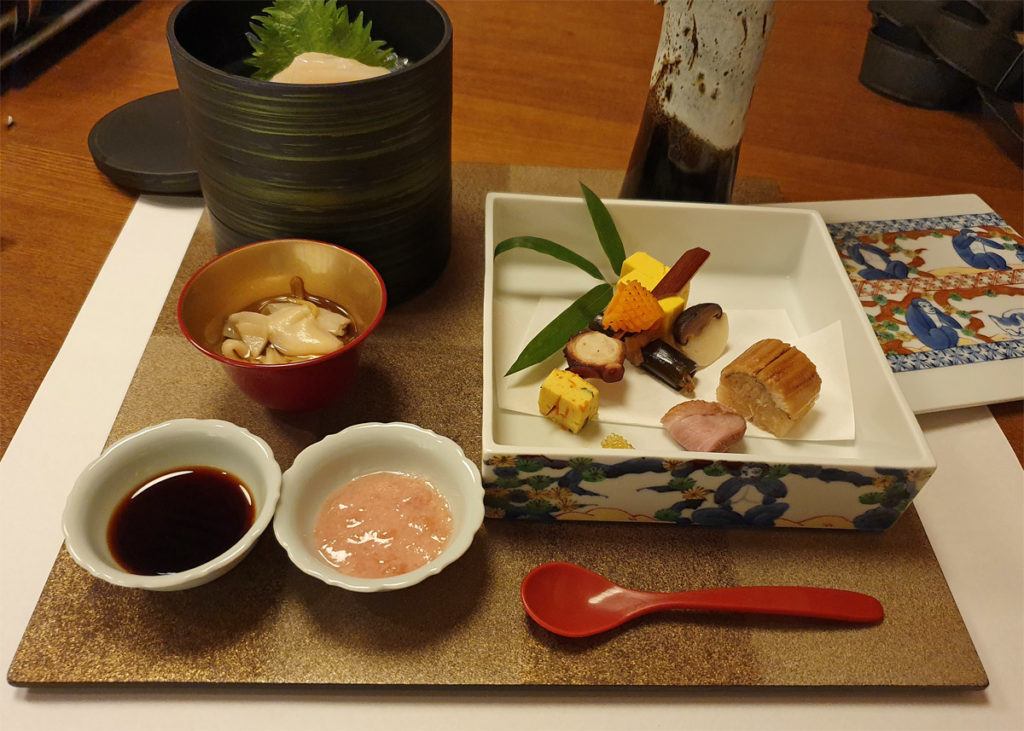
The tempura shown in the picture below was one of my favourite courses. The tempura batter was light and crunchy and never overwhelmed the flavours of the chicken and vegetable. I got a really pleasant surprise from the fois gras which I would have expected to be very rich but was very nicely balanced in this dish. The lemon and green tea salt also provided a really nice contrast to the tempura.
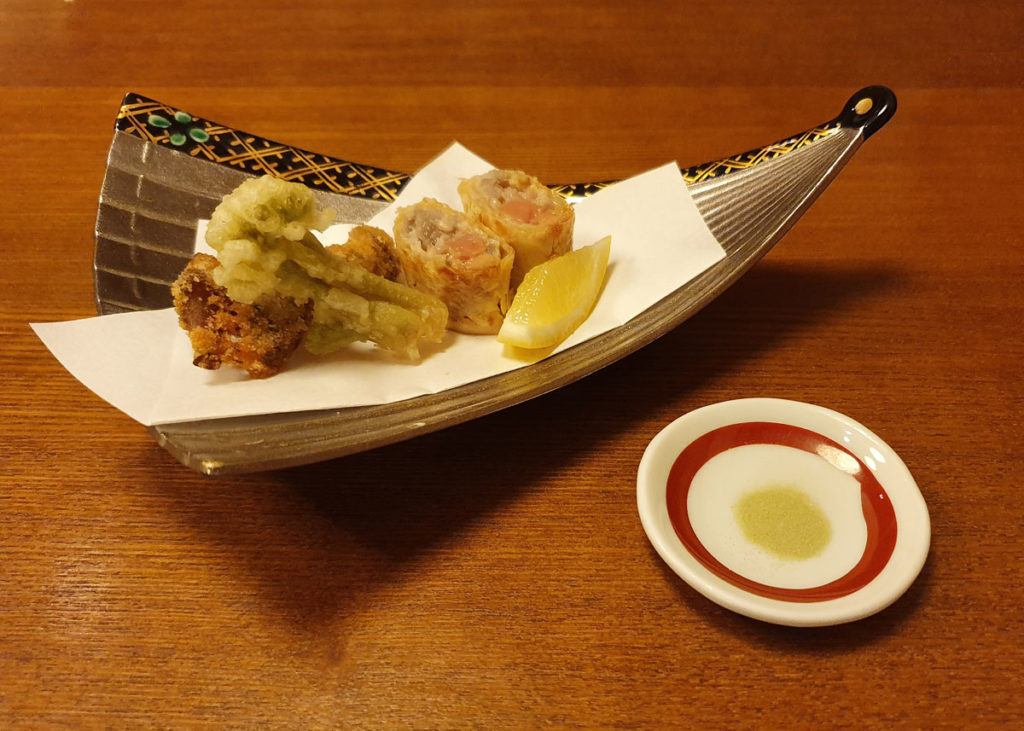
We also really enjoyed the steamed Wagyu beef Shabu Shabu. The theatre of it being cooked in front of you in the Oya Stone box was great, and it tasted delicious!
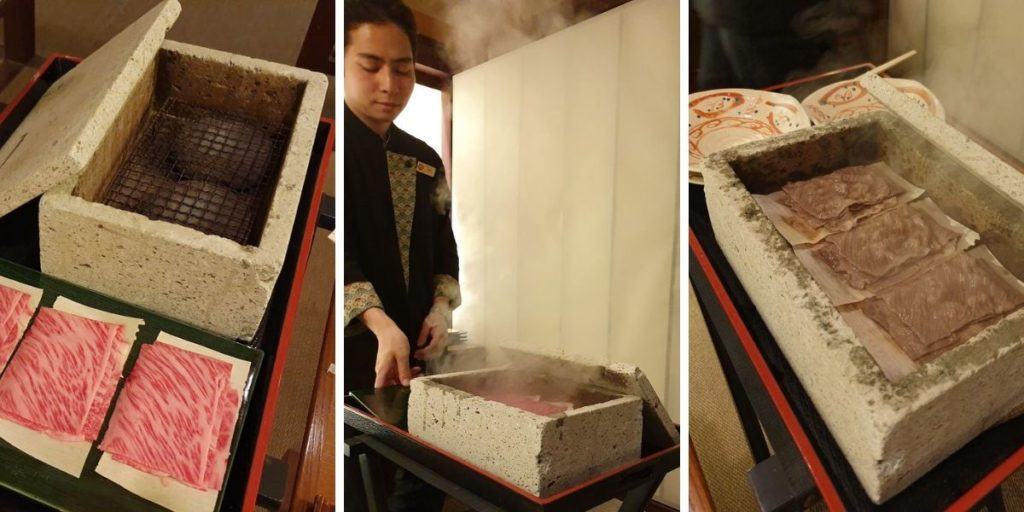
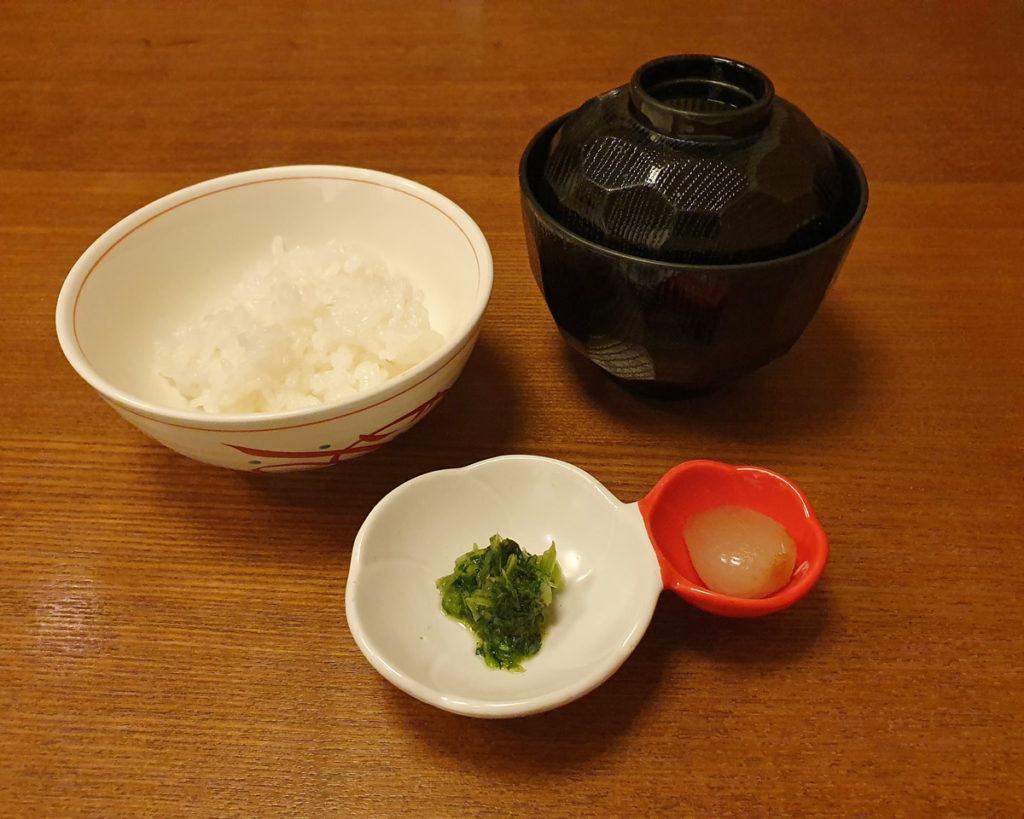
The dessert was a really nice way to finish the meal. The dish was again beautifully presented, and the monkey on the Welcome to Kai Nikko chocolate was cute and whimsical. The citrus liqueur was a great way to conclude our kaiseki meal on our first night at Kai Nikko.
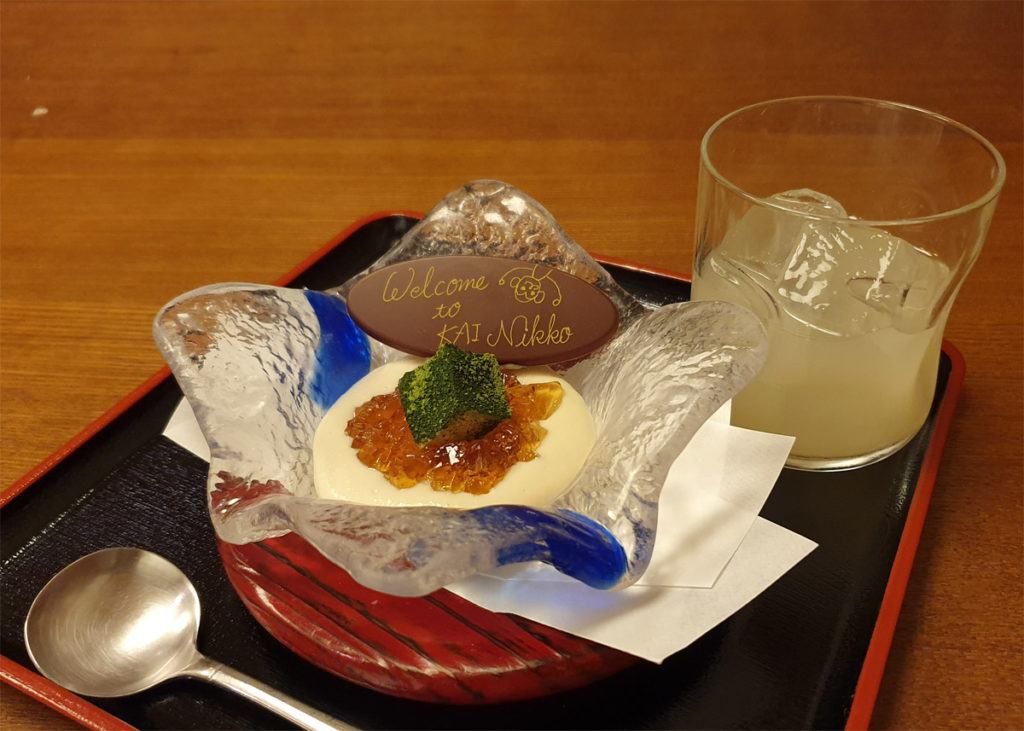
Following are just a couple of examples of the courses from the following night’s dinner menu. We really enjoyed the fact that the food we experienced on the second night was quite different from what we tasted on the first night, while still following the structure of a kaiseki meal.
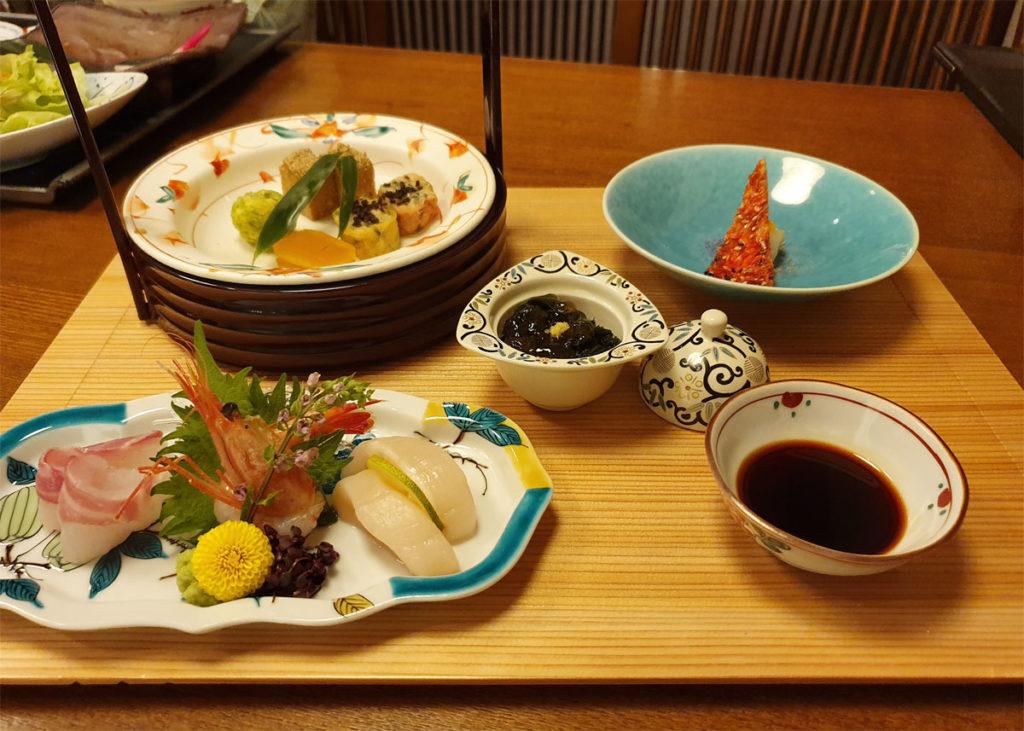

KAI Nikko also offers a children’s meal with some common elements from a kaiseki menu but with a limited range of courses. Our two sons (aged 10 and 13) really enjoyed the dishes served as part of the children’s meal. However, our oldest son was slightly aggrieved that his meal didn’t include beef as he is obsessed with wagyu beef.
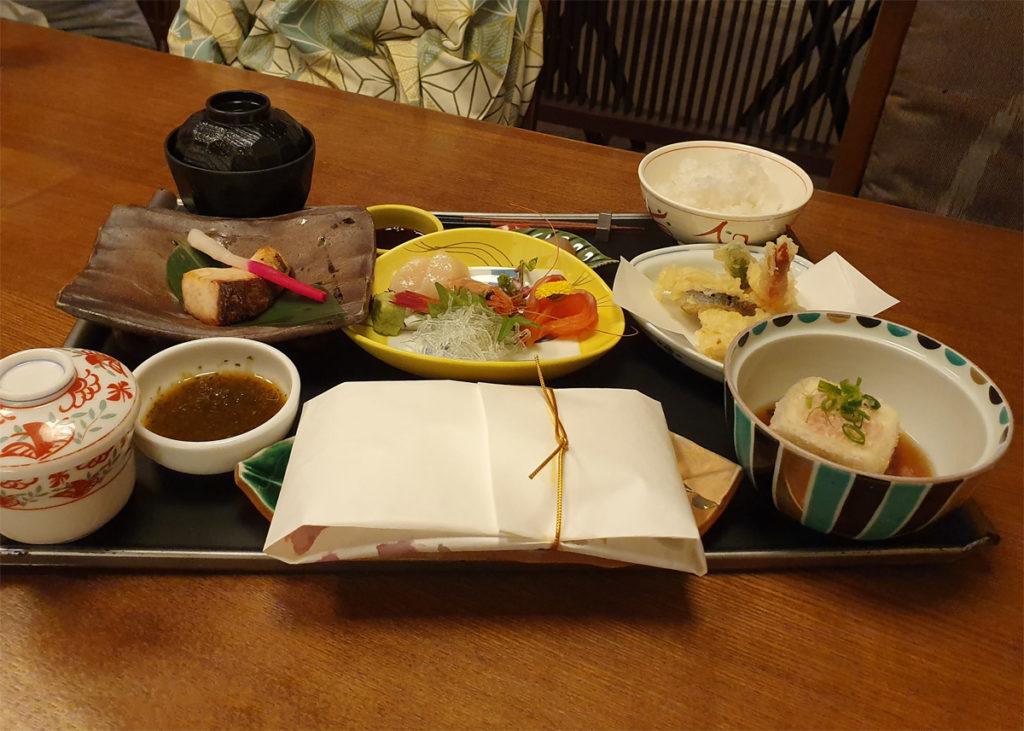
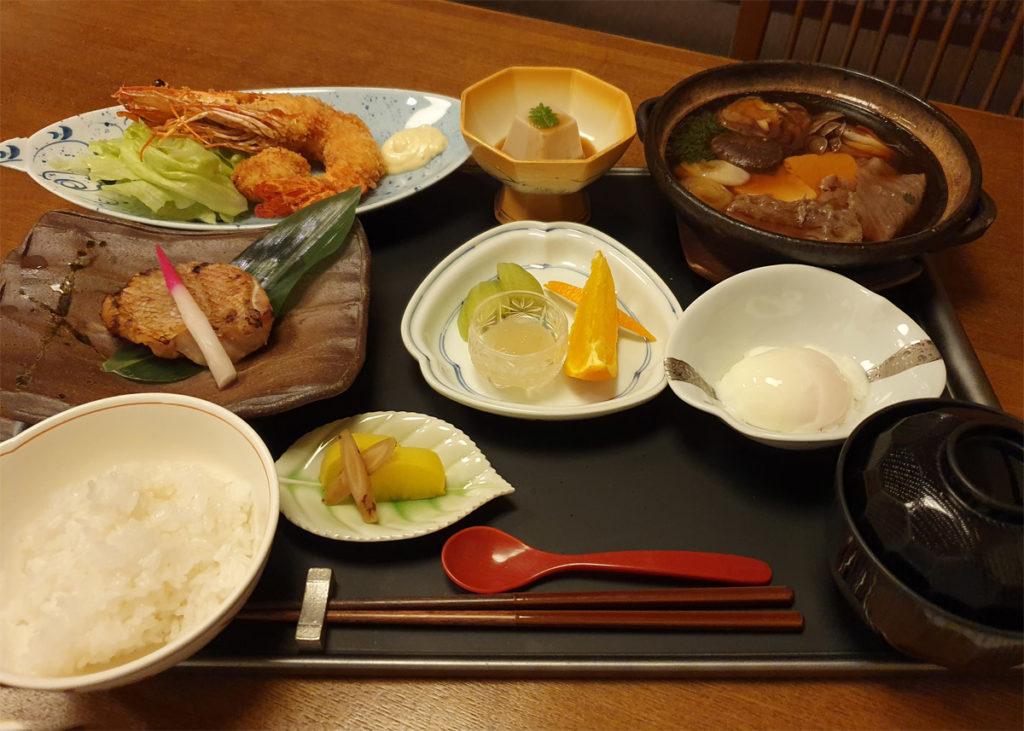
Breakfast at KAI Nikko
The Japanese style breakfast at KAI Nikko was also an experience. Breakfast was served as a single course, so we could easily have a quick breakfast and then get on with our activities for the day. Below is the breakfast menu for our visit and some photos to enable you to see examples of the typical food provided. There was no option to have a western-style breakfast at KAI Nikko.
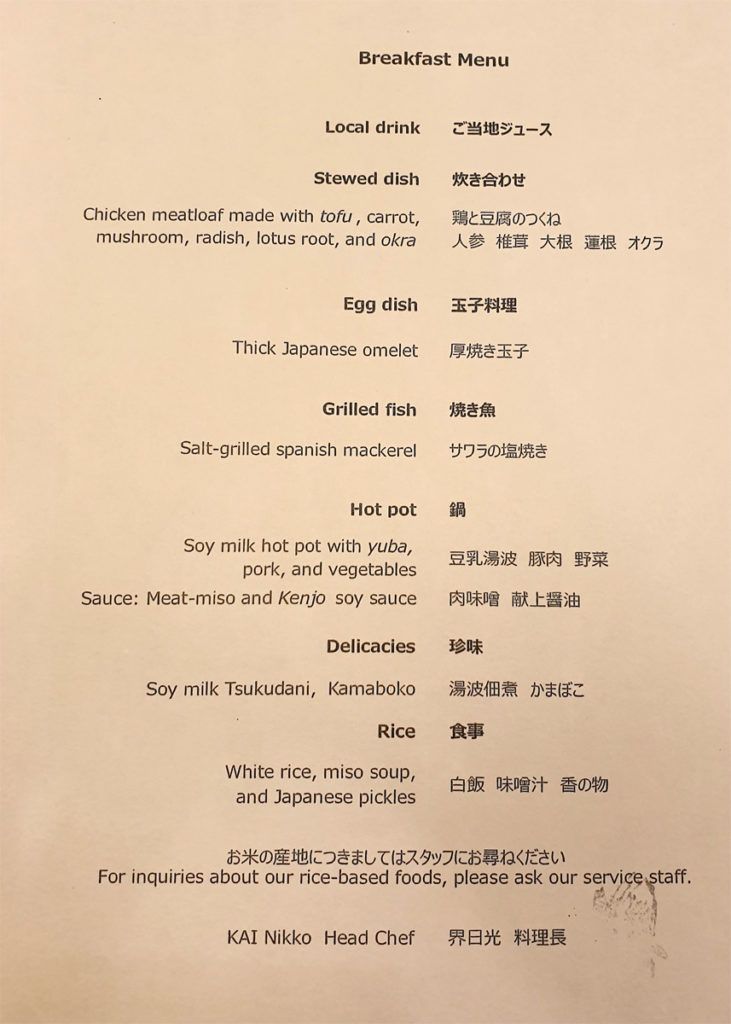
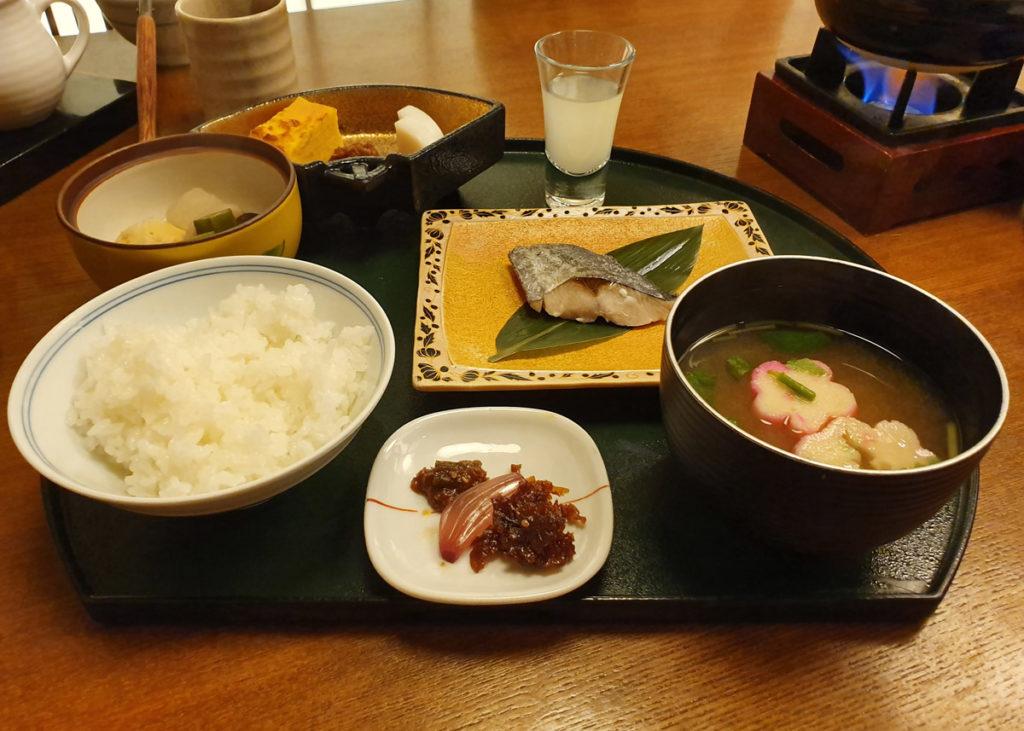
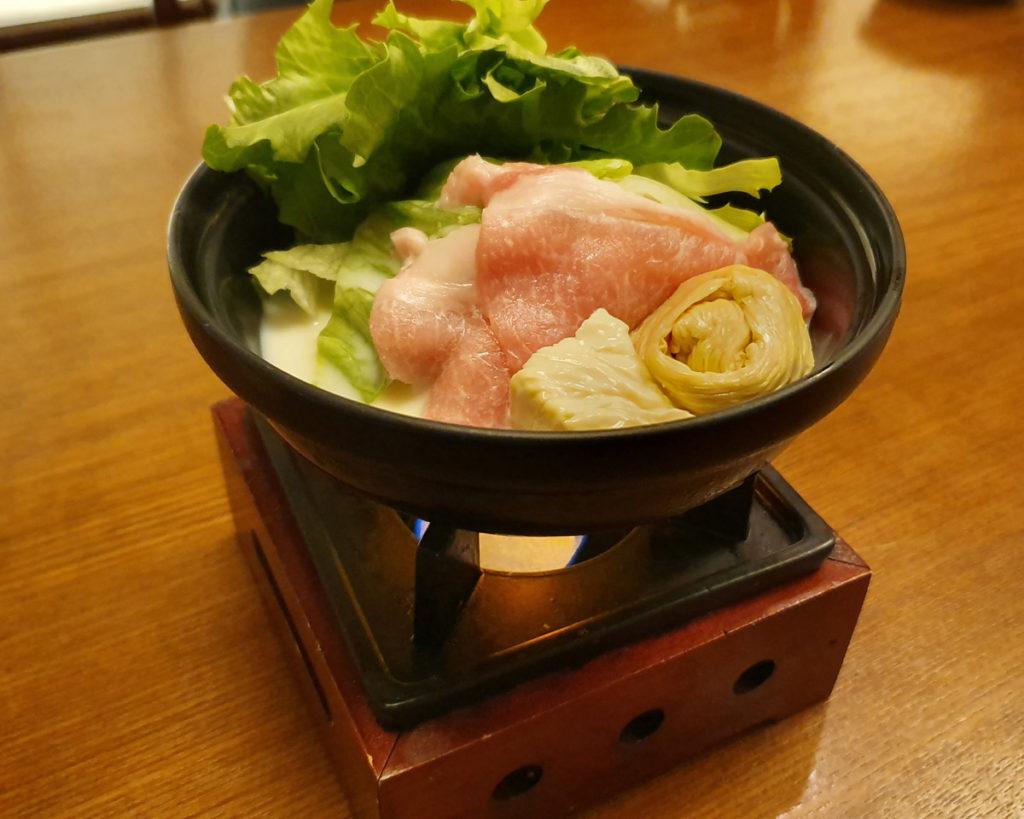
KAI Nikko Onsen Experience
As you would expect, a visit to KAI Nikko is not complete without using their hot spring facilities. Kai Nikko onsen has a selection of bathing options using the local Nikko hot spring waters. The bathing facilities are separated by gender. Both males and females have a choice of an indoor bath and an outdoor bath. The indoor onsen baths are lined with cedar while the outdoor baths are adorned with rocks. My personal favourite was the rock-lined outdoor bath as the rocks were smooth and curved which provided plenty of places to sit and relax in the warm waters.
There is also a second outdoor bath which alternates between males and females. The lamp below showed the schedule for the second outdoor bath when we visited with females able to use the onsen between 3:00 pm and 1:00 am and men able to use the outdoor bath between 5:00 am and 11:00 am.
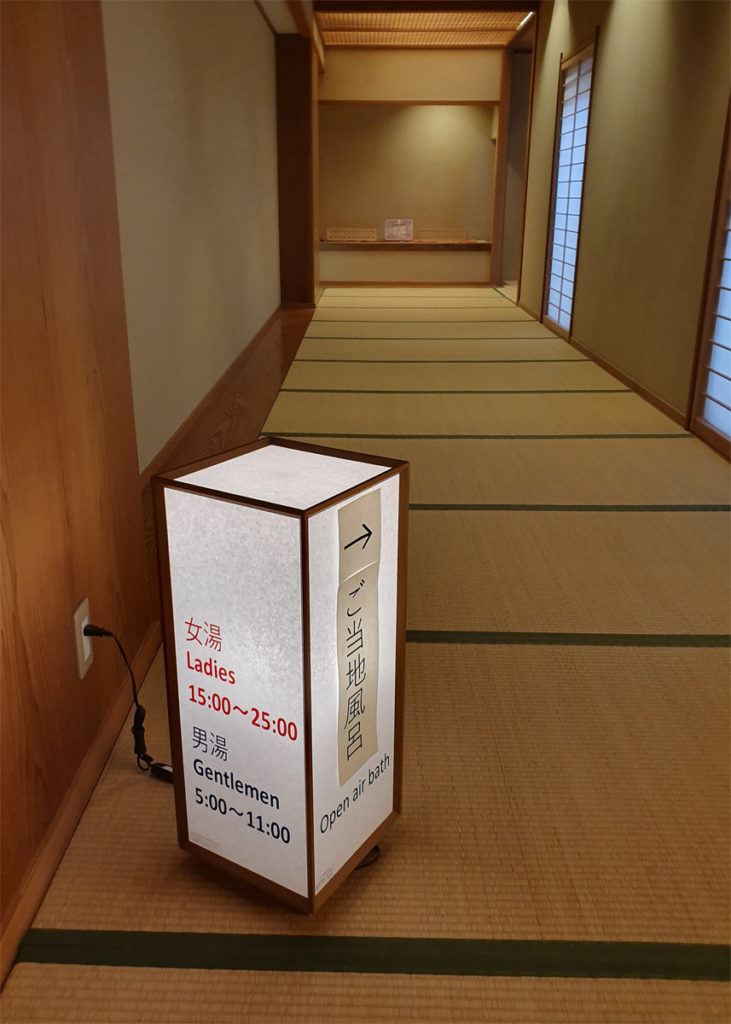
The onsen facilities start with a common area called the Yugari Lounge, which can be used for guests for relaxation or meditation.
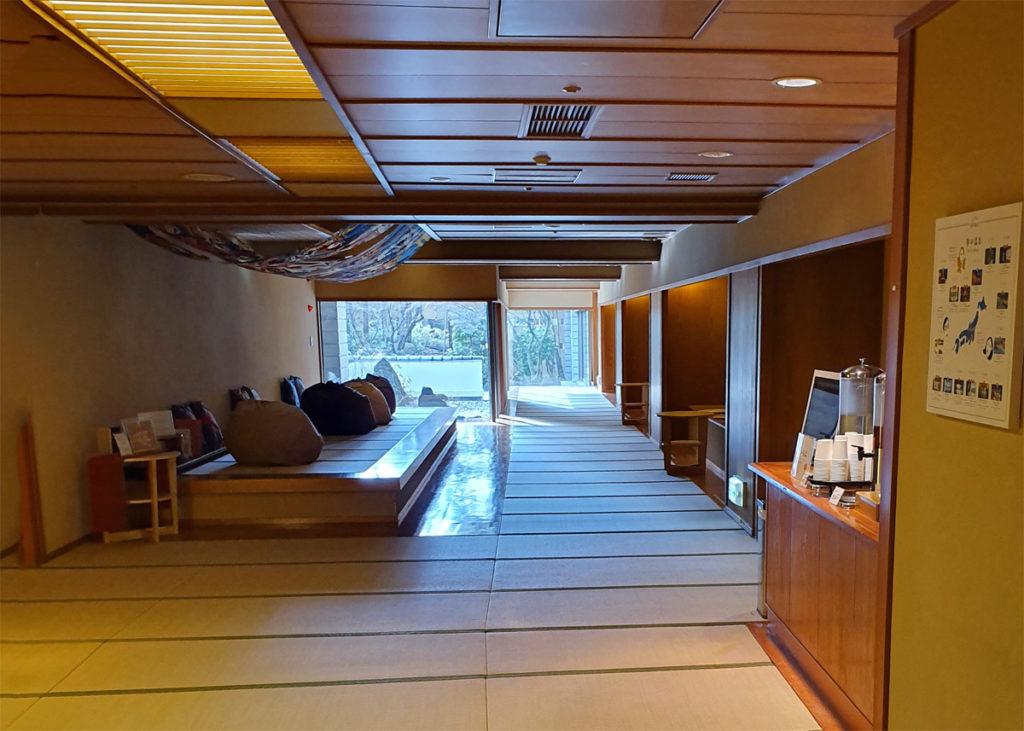
Complimentary refreshments are also available in this area so guests can rehydrate after spending time in the Kai Nikko hot spring facilities.
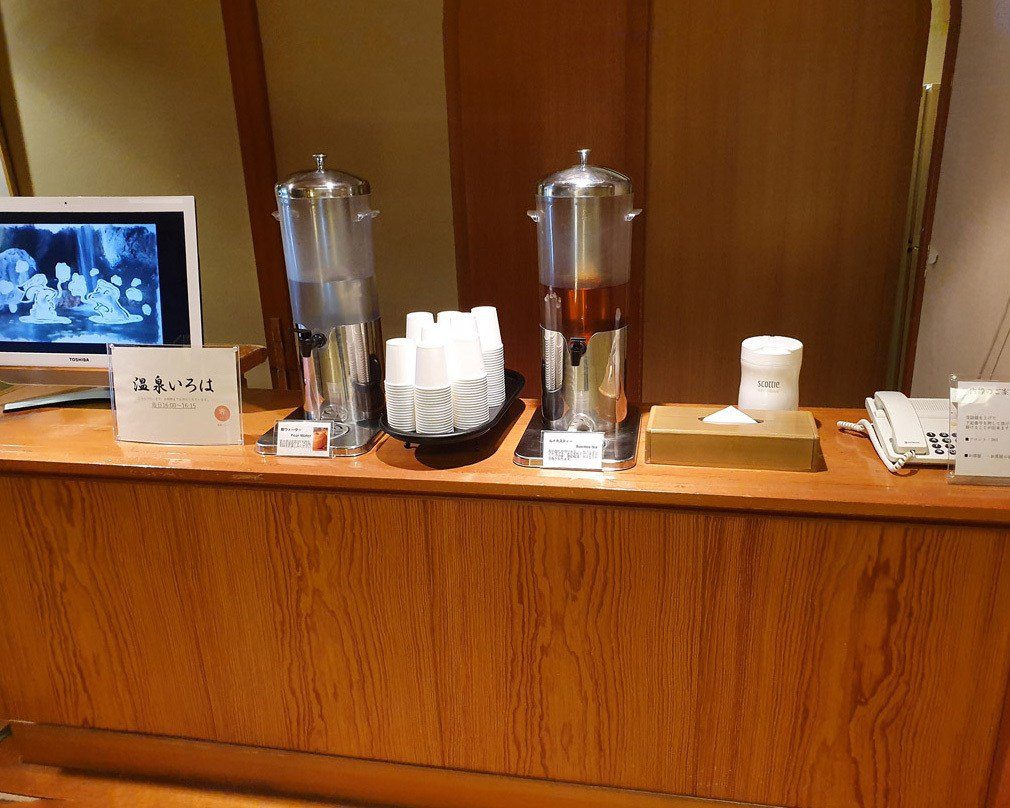
Once you are ready to head into the hot spring baths, the red curtains show the female bathing area and the blue curtains show the male bathing area.
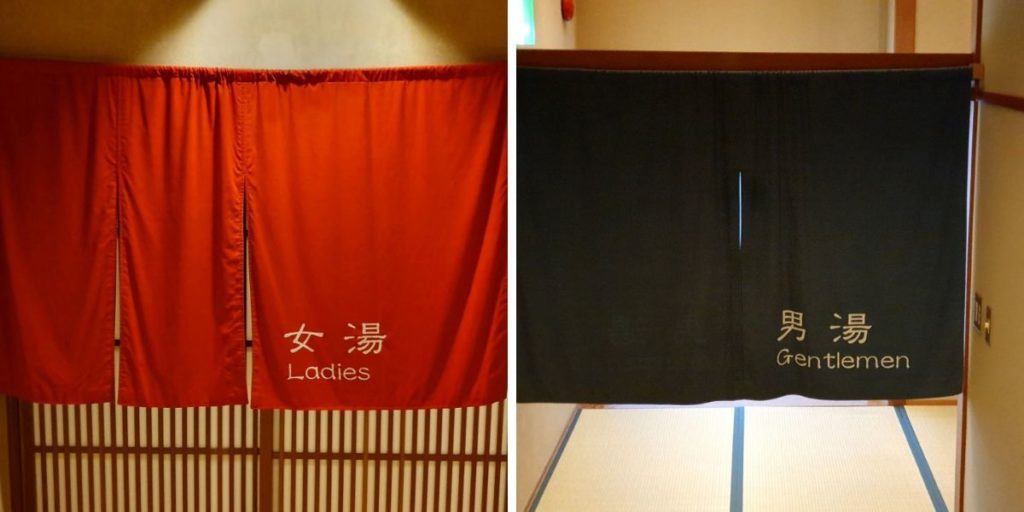
After you enter the male or female onsen area, you enter a change room where you can remove your yukata and store it in the provided baskets. There are also lockers, towels and grooming facilities, as well as a rehydration station to avoid dehydration between turns in the hot spring baths. Note that you are not allowed to wear any clothing items in the baths, and tattoos must be covered by adhesive plasters which you can request at the reception desk. No photos are allowed – note that we took these photos when no other person was using the facilities and while a Kai Nikko staff member was present.
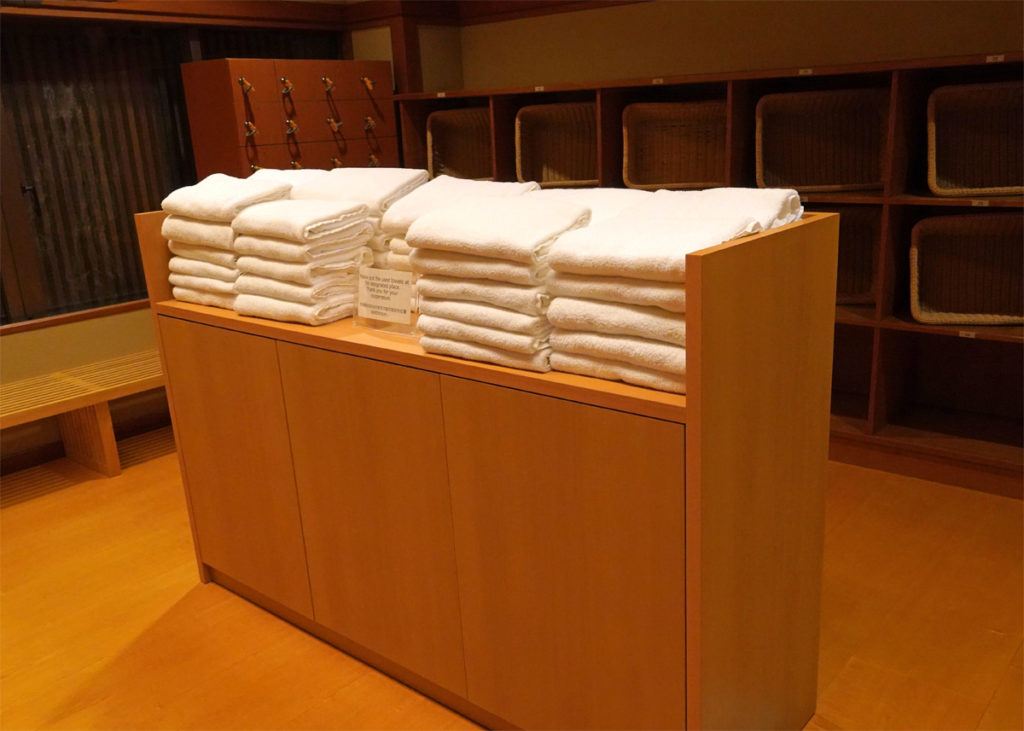
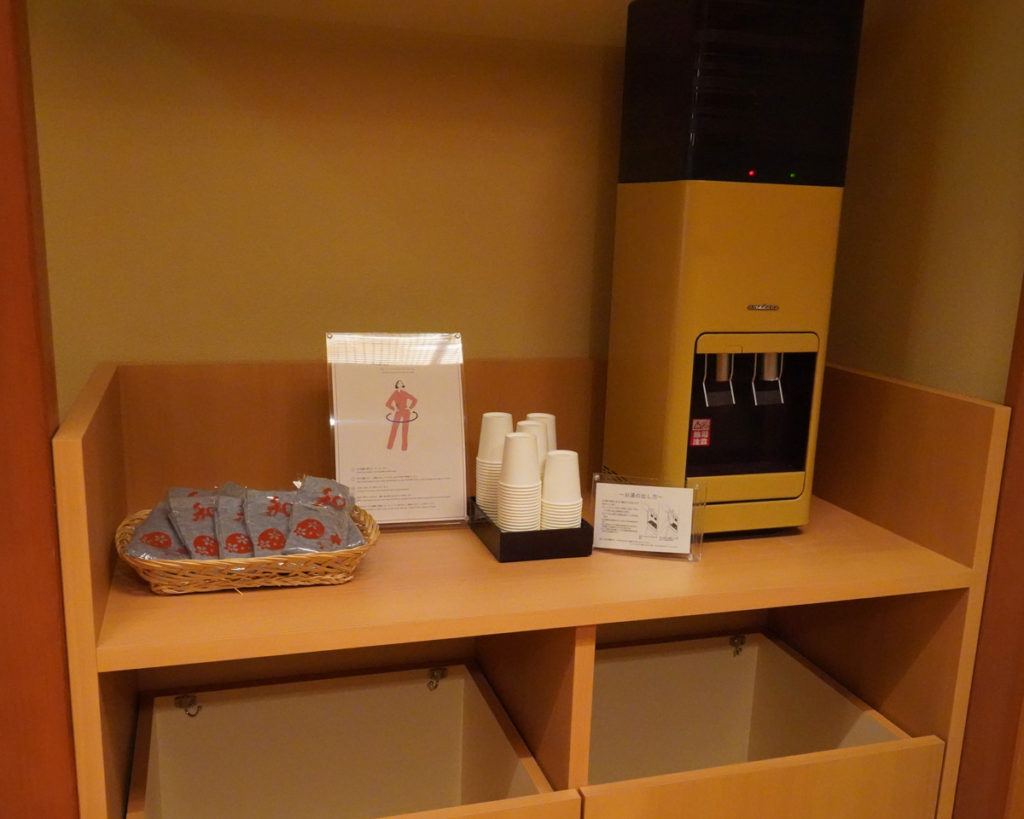
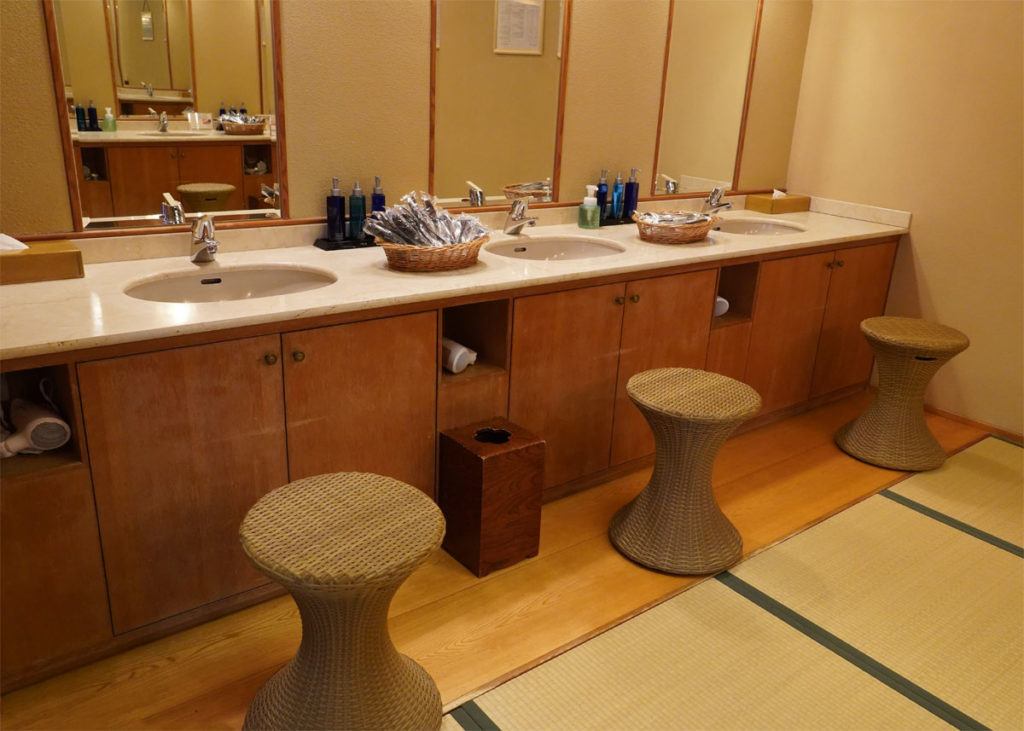
After getting changed, there are bathing facilities where you are expected to wash and rinse before you enter the onsen baths. Use the bath buckets to wash and acclimate to the water temperature in the hot spring baths.
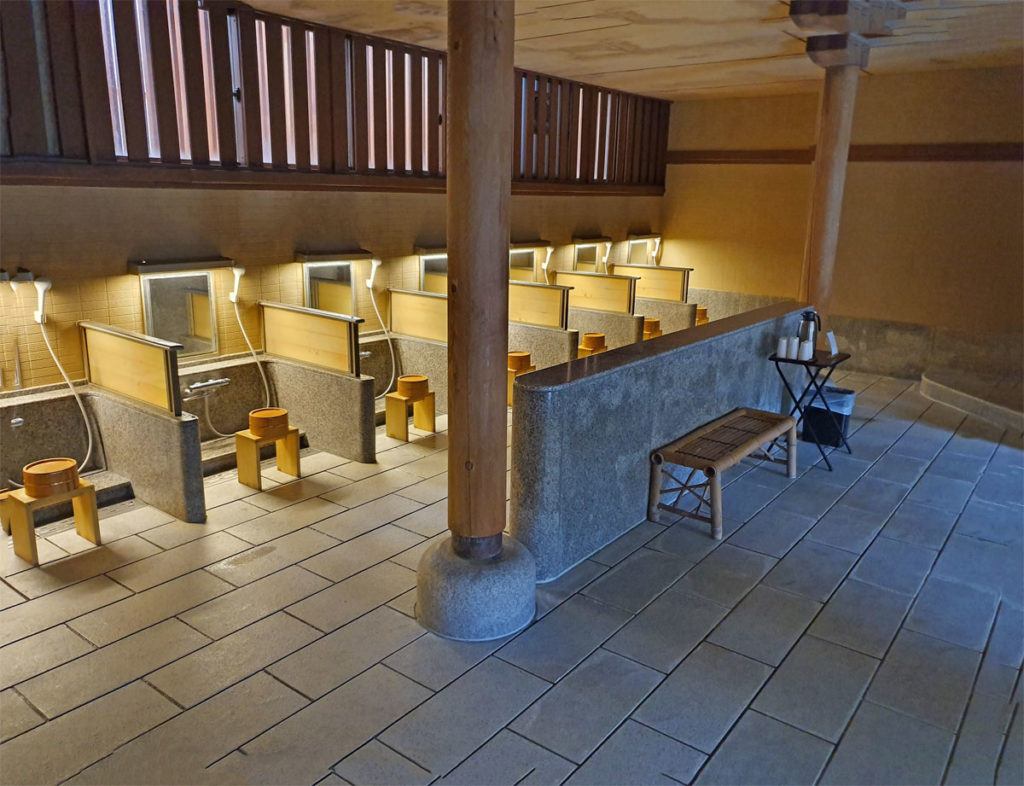
The two photos below show the indoor and outdoor baths for women. Before entering the bath, soak yourself up to your waist, then once you are used to the water temperature slowly lower yourself deeper.
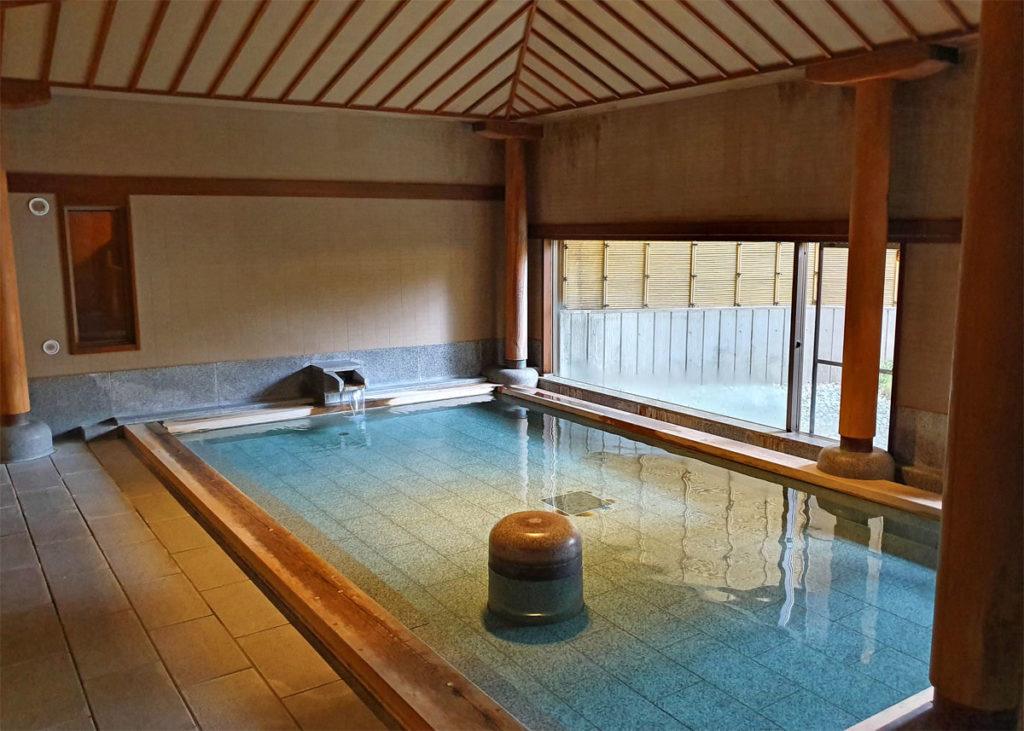
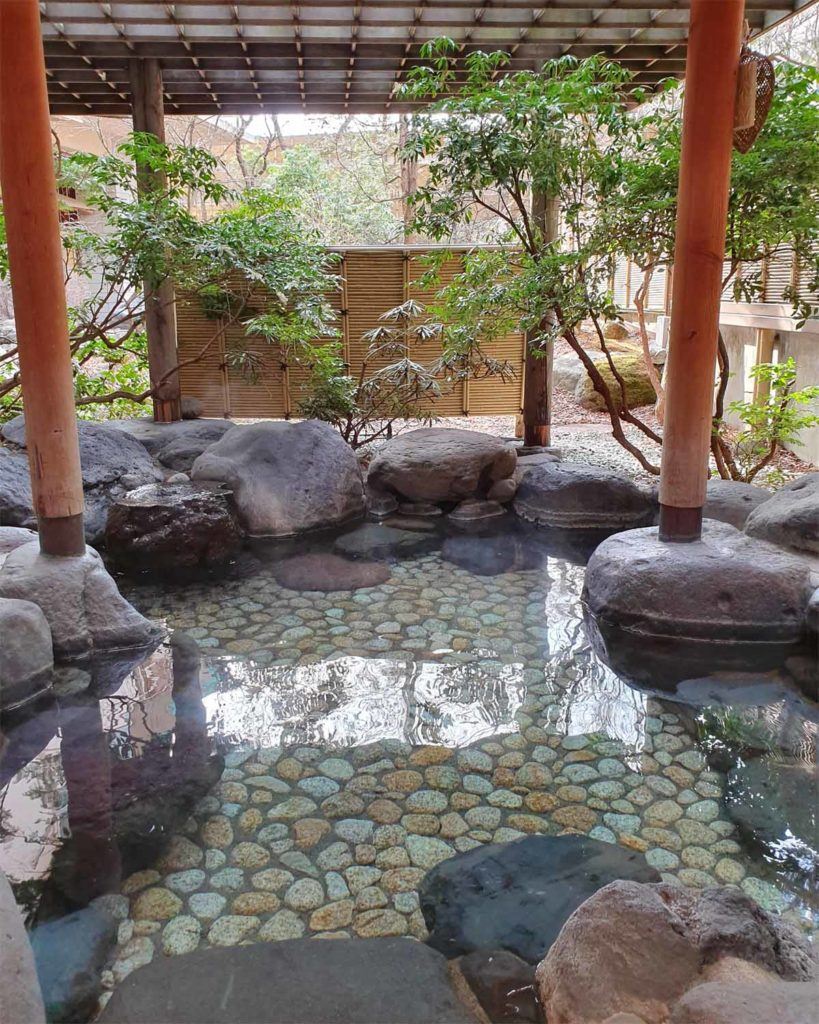
The next two photos show the indoor and outdoor hot spring baths for men.
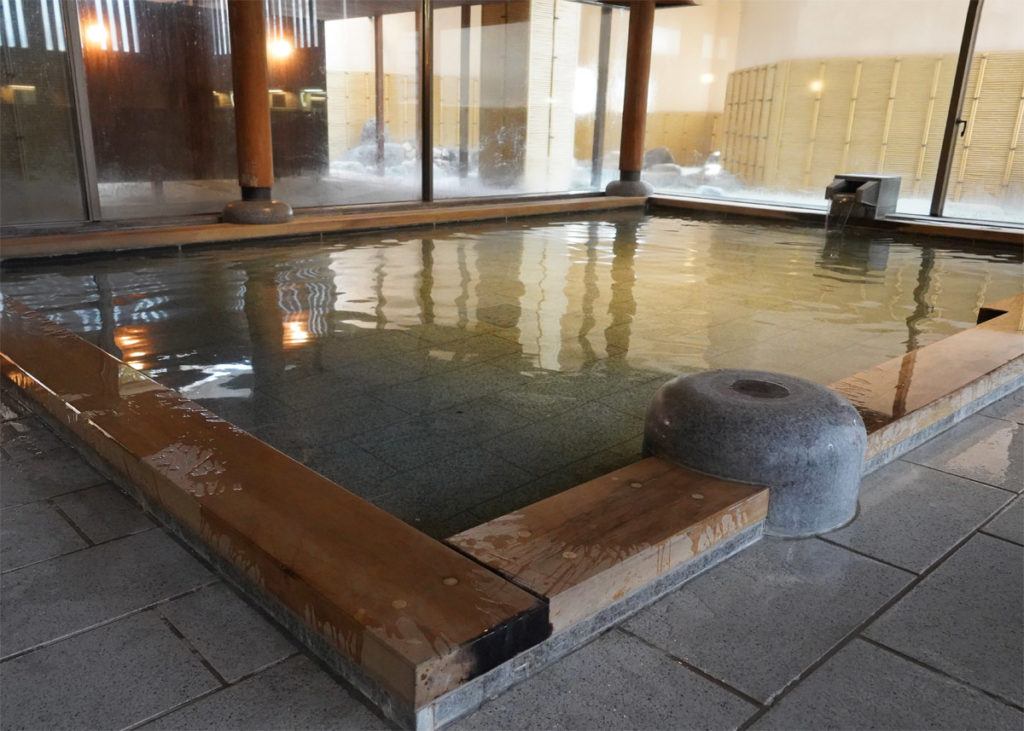
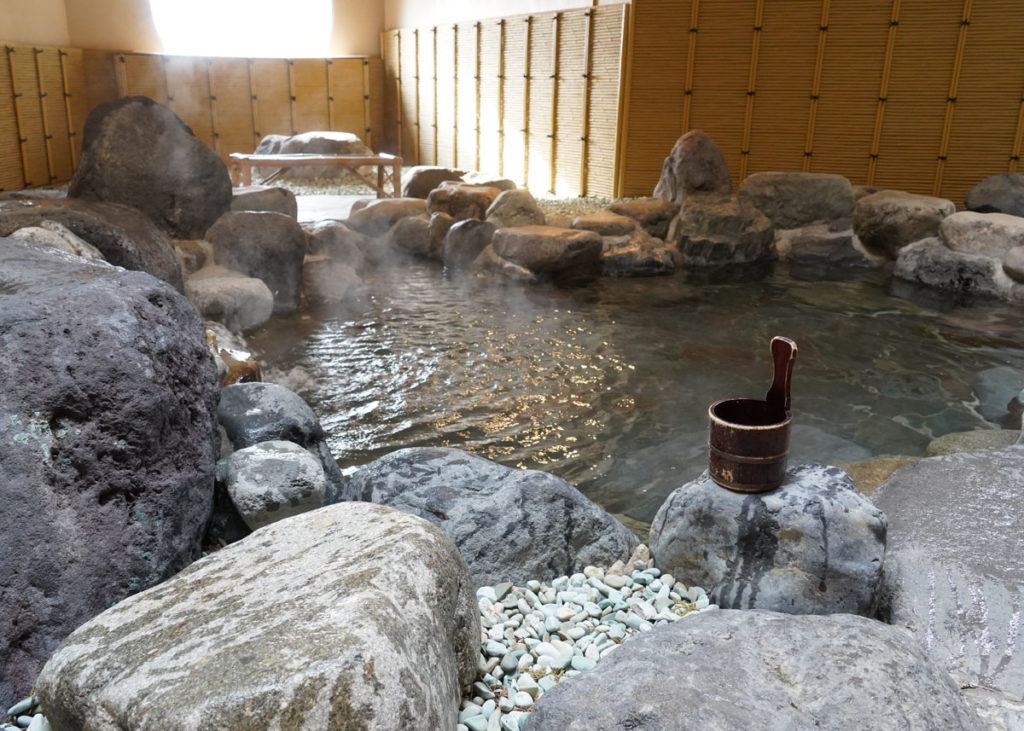
The final photo below shows the second outdoor hot spring bath which alternates between males and females.
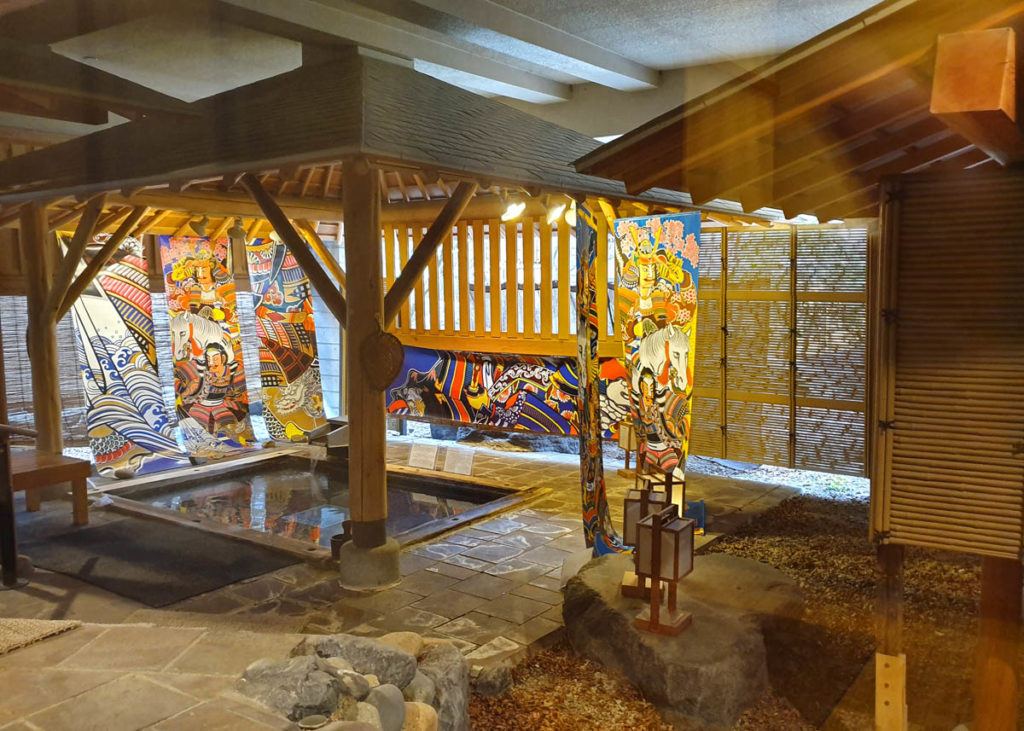
We have now experienced many onsen baths, and we usually find that about 10 minutes in an onsen bath is enough. Pay attention to your body and when you feel like you are getting too hot then it is time to get out. After you bathe you can then have another shower, have a drink and then decide whether to bathe again!
On the first night of our stay at Kai Nikko, I also enjoyed an in-room massage. Prior to the massage, the massage technician consulted with me about any ailments or areas of discomfort. In my case, I was quite sore around my neck, shoulders and upper back as well as my calf muscles. After an active day, the combination of soaking in the onsen combined with a deep tissue massage was a great way to ease my aches and pains.
For more information about onsen etiquette check out the Hoshino Resorts video below.

How to Book Your Visit to KAI Nikko Resort
You can either book through Klook, an online travel agency who now offers a great range of accommodation options. Click here to check out and book KAI Nikko through Klook.
Exploring around Nikko Onsen
There is a lot to see and do in the area around Kai Nikko Onsen, so we would definitely recommend that you plan to stay at KAI Nikko for at least two nights to make the most of the options. Here are some of the attractions we would recommend.
Within a short walk of Kai Nikko are Chuzenji Temple, Lake Chuzenji, and Kegon Falls. We would also suggest a walk through the township of Lake Chuzenji which has a nice mix of shops.
Chuzenji Temple
I would thoroughly suggest a visit to Chuzenji Temple if you have the time. It is a smaller complex built in 784 AD and from our experience has far fewer tourists than the temples and shrines in Nikko.
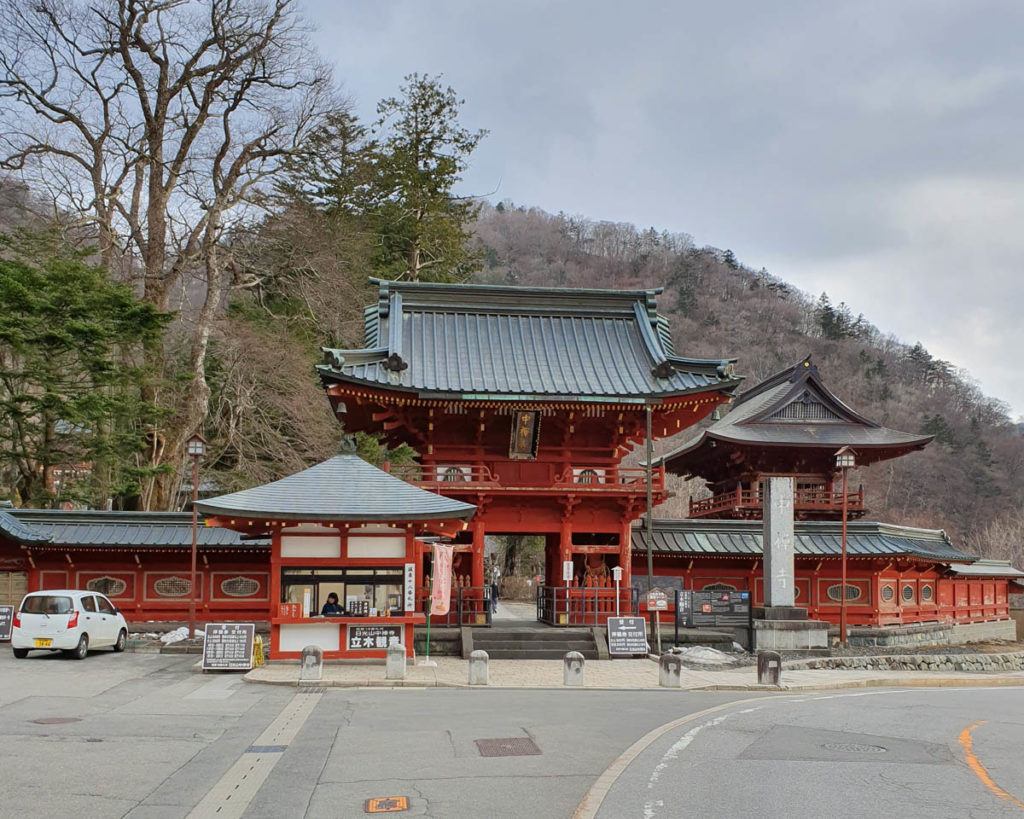
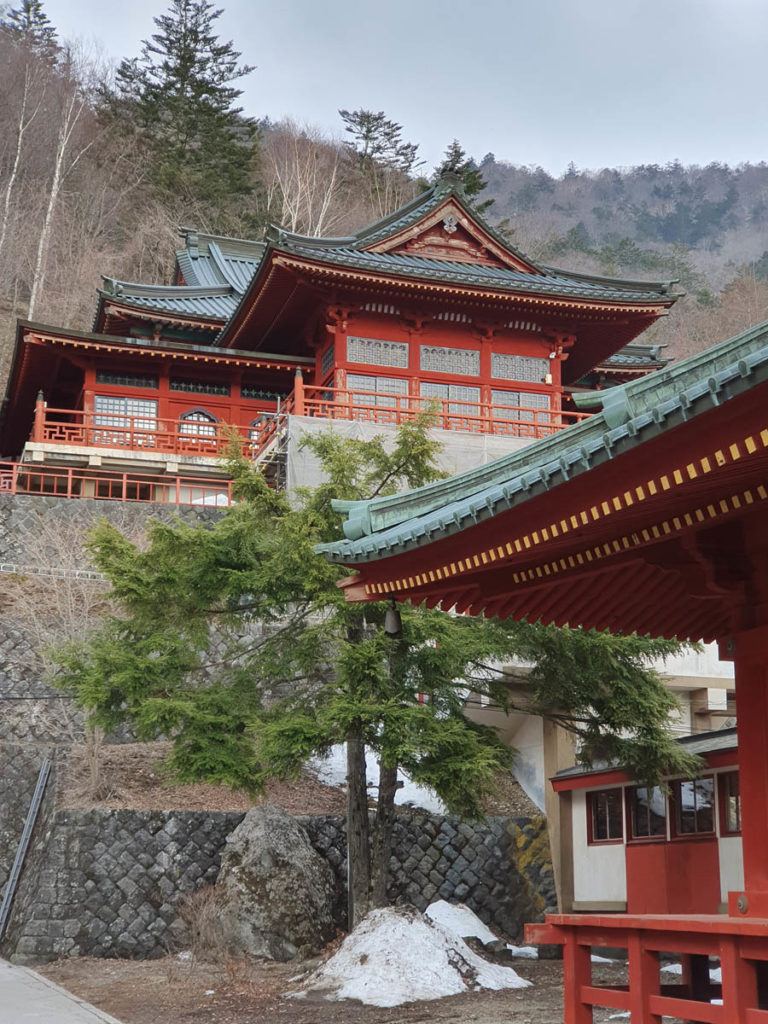
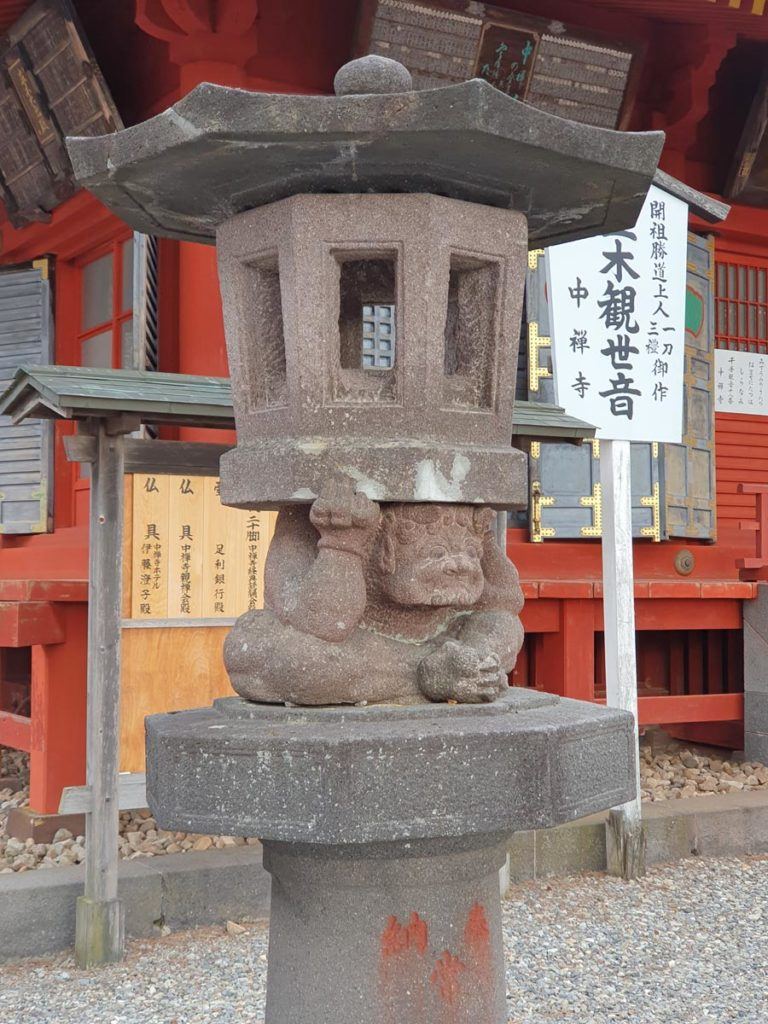
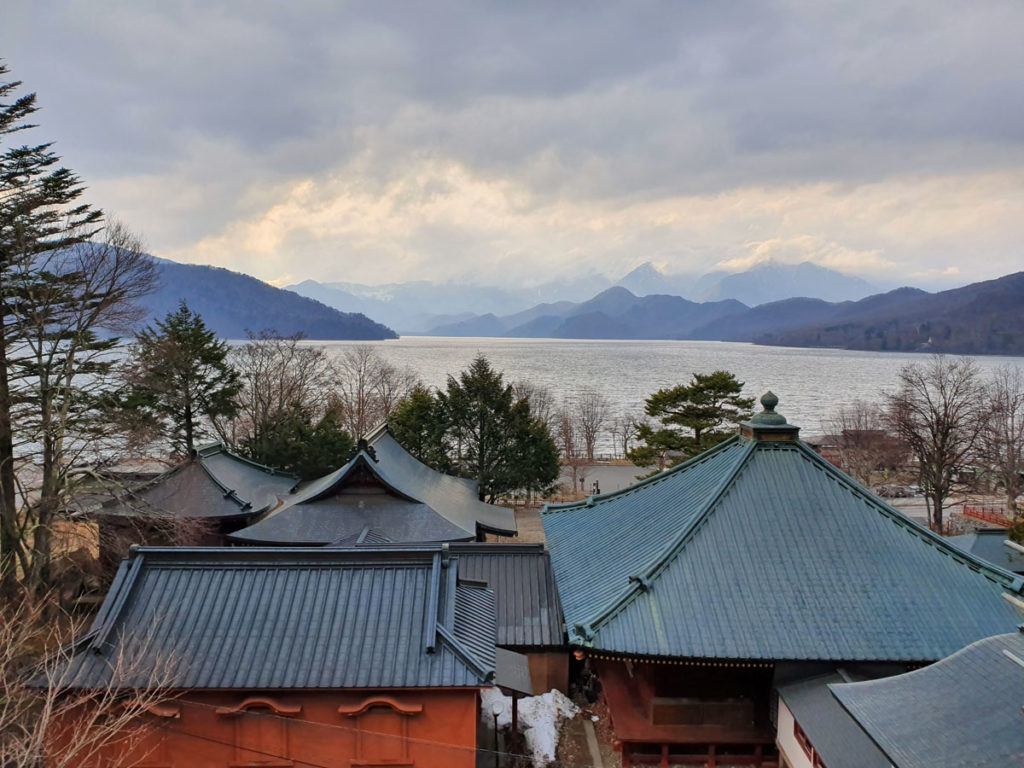
Lake Chuzenji Boat Cruise
Another option to consider if you have the time is a cruise on Lake Chuzenji. Boat cruises depart every 60 minutes on the half-hour (e.g. 9:30 am, 10:30 am) from Funenoeki in the township of Lake Chuzenji. The cruise takes about 55 minutes to circumnavigate the lake. The cruise stops at two piers – one near Ryuzu Falls (which can also be visited by bus) and the other pier near Chuzenji Temple – before returning to Funenoeki.
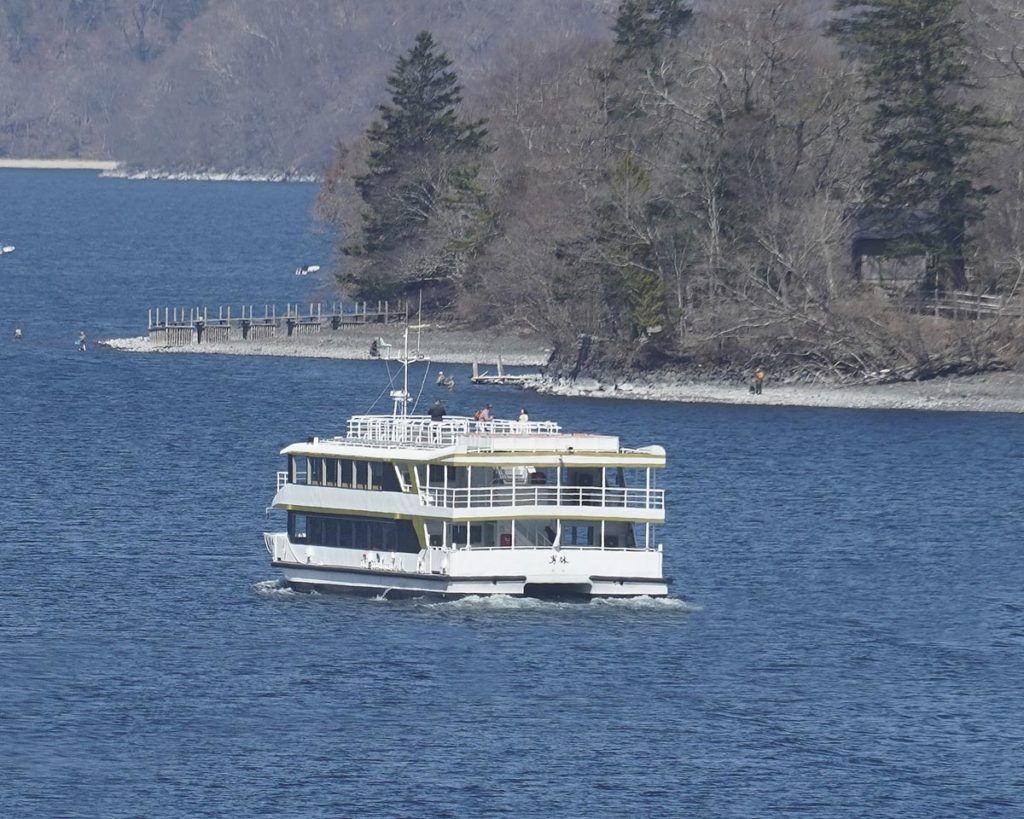
Kegon Falls
Kegon Waterfall is almost 100 metres tall and is the most famous waterfall in Nikko. It is ranked as one of the three great waterfalls of Japan. It can be viewed from either a free observation platform at the top of the falls or you can use a paid elevator which takes you down 100 metres to a second platform. I feel that the view of the fall is better from the lower, paid platform. As I mentioned earlier, it is also definitely worth sampling some of the food options available from the food stalls at the top of Kegon Falls.
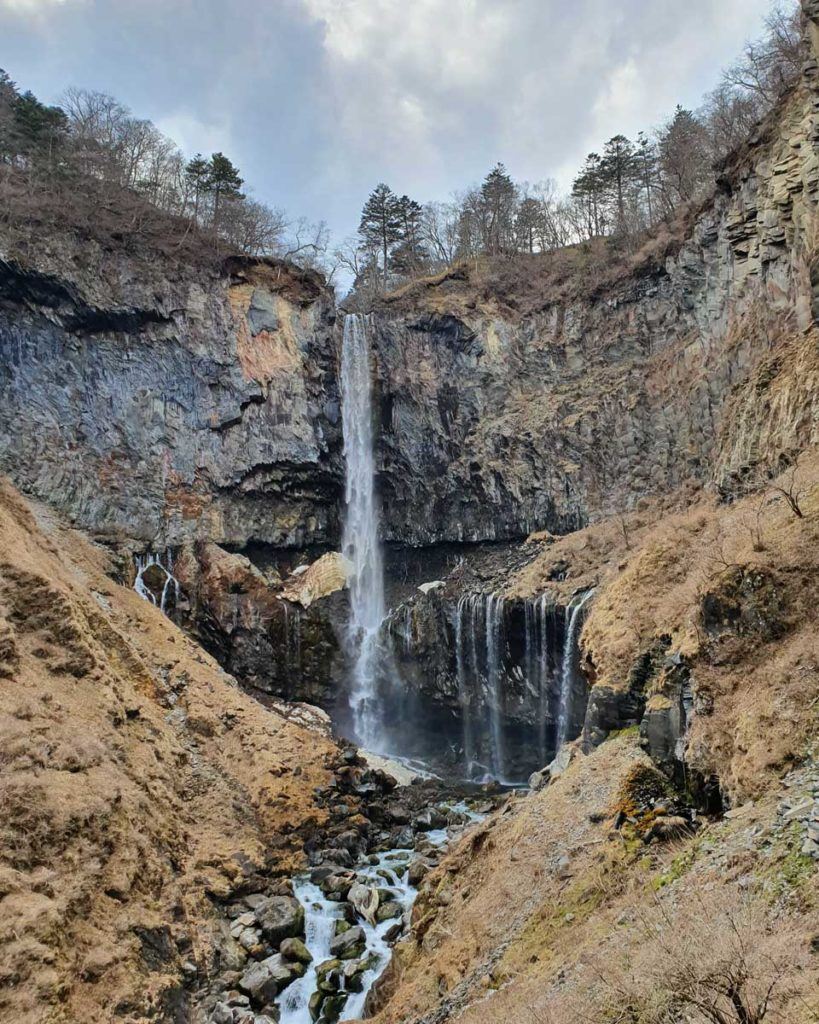
You may notice in the photo below that my daughter has her eyes shut. We have a remarkable number of family photos where her eyes are closed. It’s a cause for minor celebration when we get a shot with her eyes open and with a smile on her face 🙂
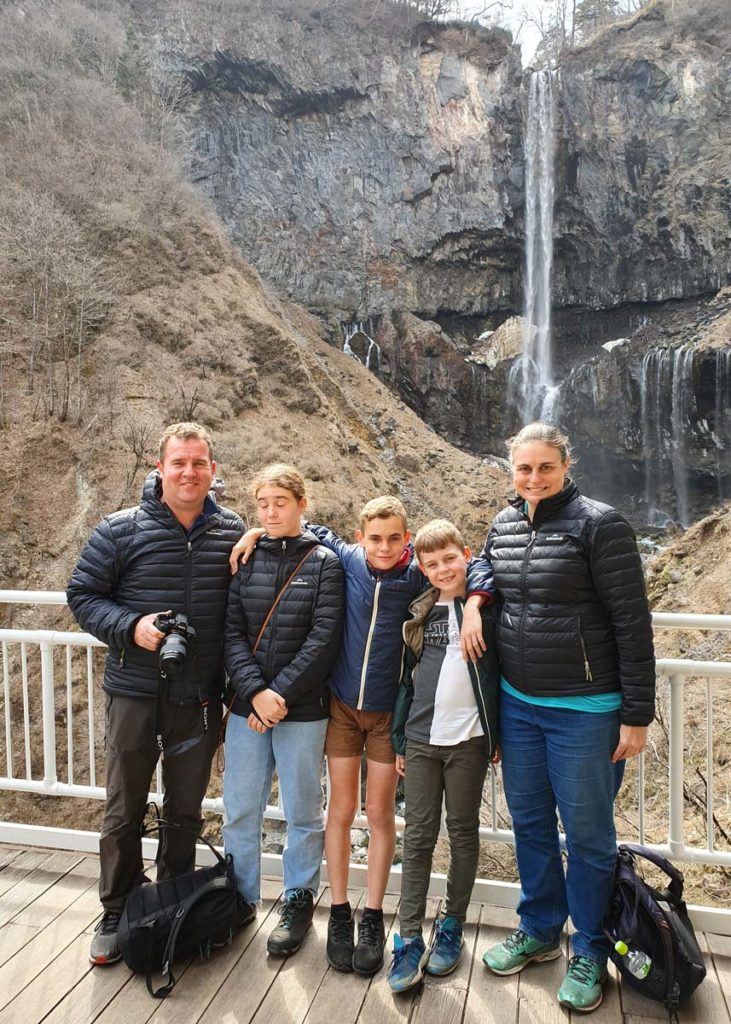
Ryuzu Falls
Another waterfall worth visiting near Lake Chuzenji is Ryuzu Falls to the north-west of the township of Lake Chuzenji. It’s approximately 20 minutes by Tobu Bus from the bus stop near Chuzenji Temple. It’s a quite small (at least compared to Kegon Falls) but beautiful waterfall. It takes its name from it’s resemblance to a dragon’s head – ‘ryu’ means dragon and ‘zu’ means head.
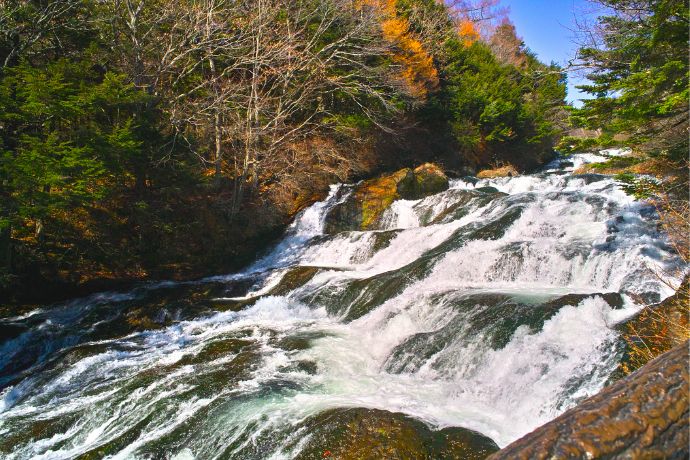
Senjogahara Wetland
Another popular place to visit near Lake Chuzenji, particularly for hikers, is Senjogahara Wetland (also known as Senjogahara Marshland). It is located about 10 minutes by bus beyond Ryuzu Falls. It’s a huge wetland of about 400 hectares with a mountain backdrop and is full of plants (including native wildflowers in late Spring and Summer) and birds. It takes about two to three hours to hike the total trail around the wetland.
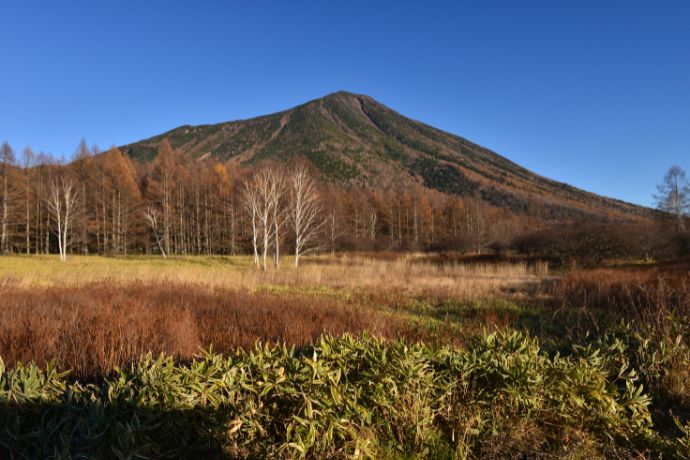
Akechidaira Ropeway
Heading back towards Nikko on the Irohazaka Winding Road is Akechidaira Ropeway which is about 10 minutes from the bus stop near Chuzenji Temple. The ropeway takes about three minutes to get from Akechidaira to the Akechidaira Plateau observatory. We ran out of time to take the ropeway which was a great shame as it offers a fantastic view of Lake Chuzenji and Kegon Falls and the Irohazaka Winding Road itself.
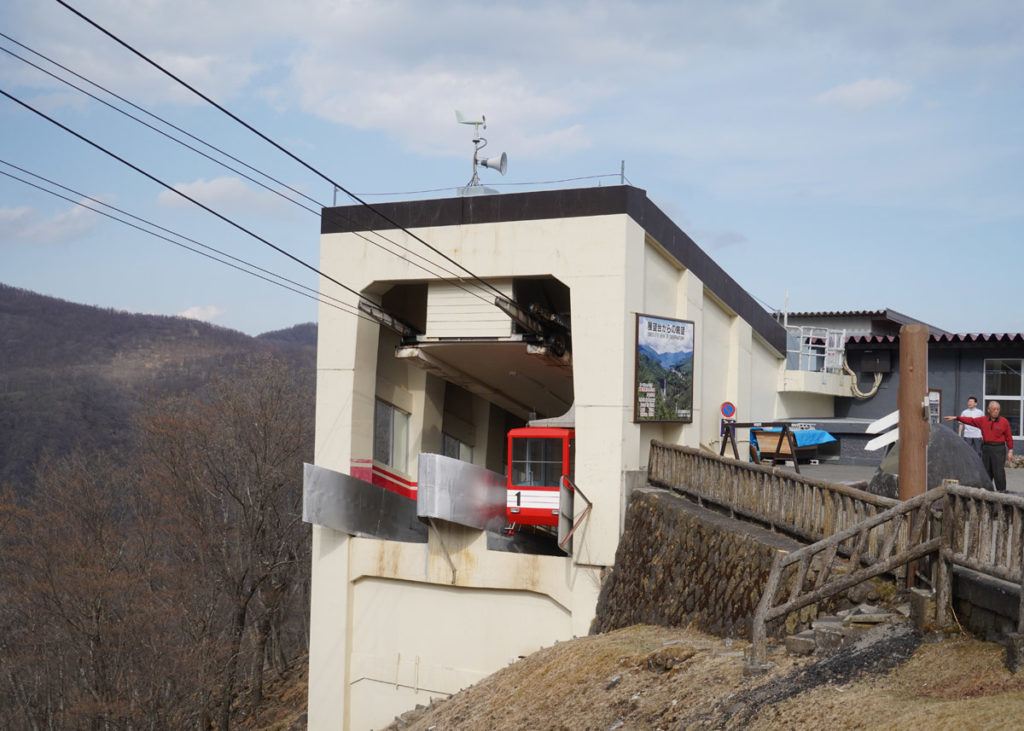
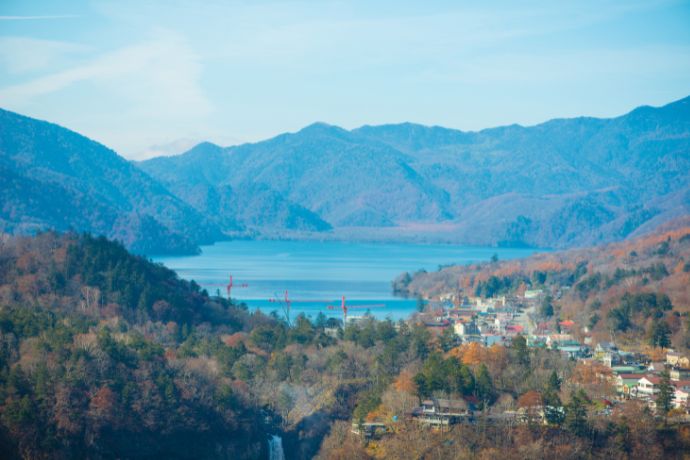
Central Nikko – Shinko Bridge, Rinnoji Temple, Toshogu Shrine and Futarasan Shrine
The township of Central Nikko is host to a number of historical attractions and you could easily spend a half-day exploring this part of Nikko. Just some of the attractions that are definitely worth a visit include Shinkyo Bridge, Rinnoji Temple, Toshogu Shrine and Futarasan Shrine.
Shinkyo Bridge is a sacred bridge at the entrance to Nikko’s temple and shrine complex. It is considered to be one of the three finest bridges in all of Japan. The bridge was built in its current form in 1636. Unfortunately, it was destroyed by flood in 1902 and so was rebuilt in 1904. Historically, the bridge could only be used by the Emperor, a small number of generals and imperial messengers.
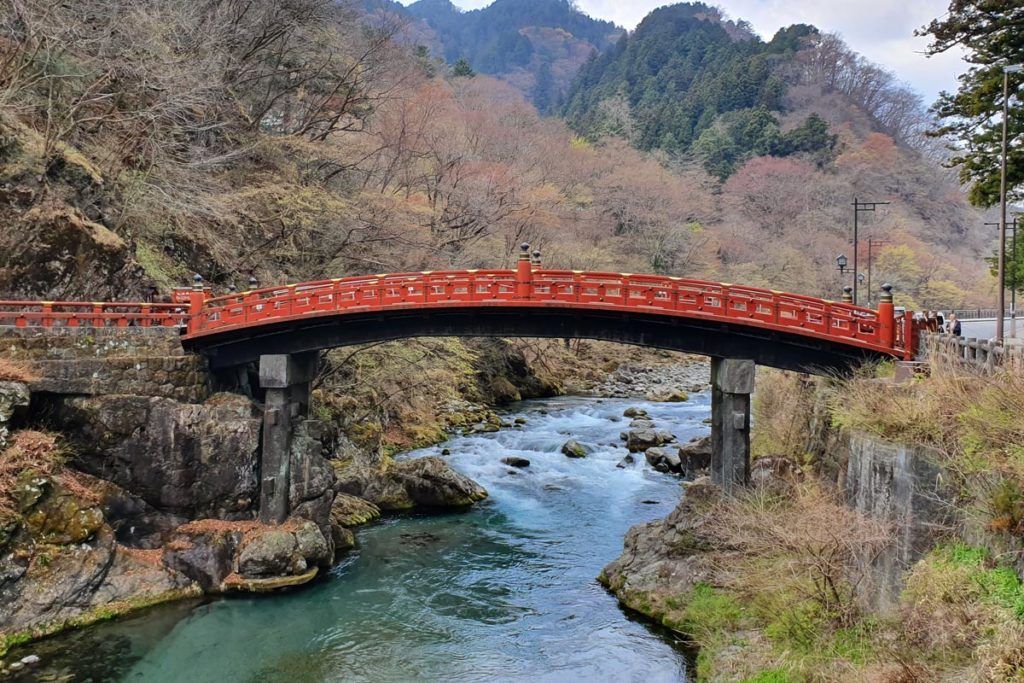
Rinnoji Temple is Nikko’s most important temple. It was founded in the 8th Century by Shodo Shonin who introduced Buddhism to Nikko. When we visited, a decade long renovation of the main building, the Sanbutsudo, was coming to an end and you could still see evidence of the renovation.
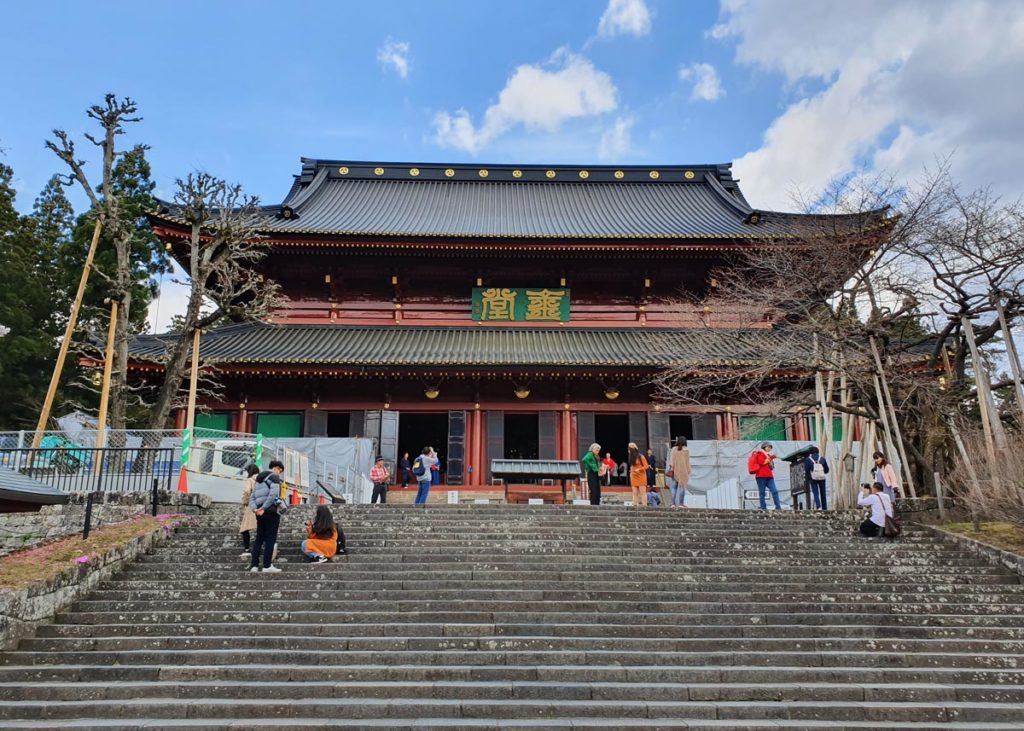
Toshogu Shrine is the final resting place of Tokugawa Ieyasu who founded the Tokugawa Shogunate which ruled Japan for over 250 years from the early 1600s until 1868. The complex consists of over a dozen buildings including a five-storey pagoda and features intricate and exquisite wood carvings and gold leaf. Make sure you visit the storehouses which feature multiple carvings of Nikko’s famous three wise monkeys (see no evil, speak no evil, hear no evil).
I would also highly recommend visiting the Nikko Toshugu Museum which is located just a short walk from the entrance to Toshogu Shrine. It is quite a small museum but it holds many beautiful artefacts and it helps give a real appreciation of the historical importance of Tokugawa Ieyasu prior to visiting his shrine. The cafe in the museum was also a good place to rest and refuel prior to visiting the shrine.
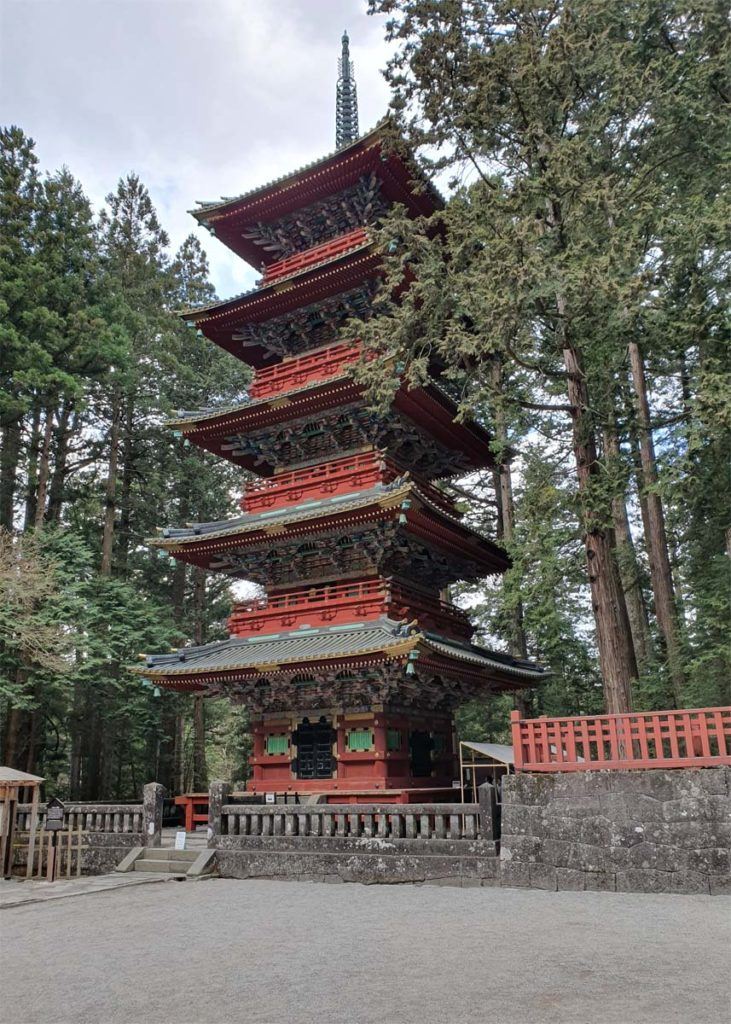
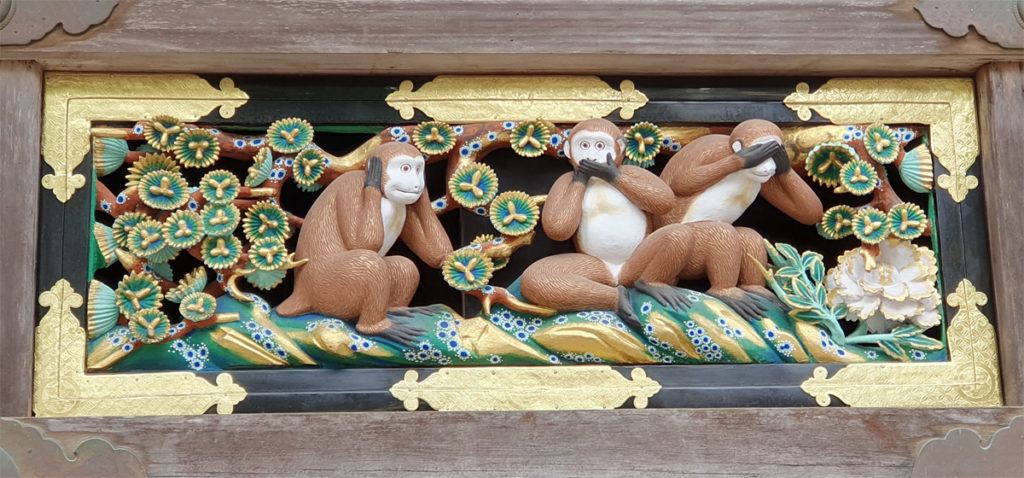
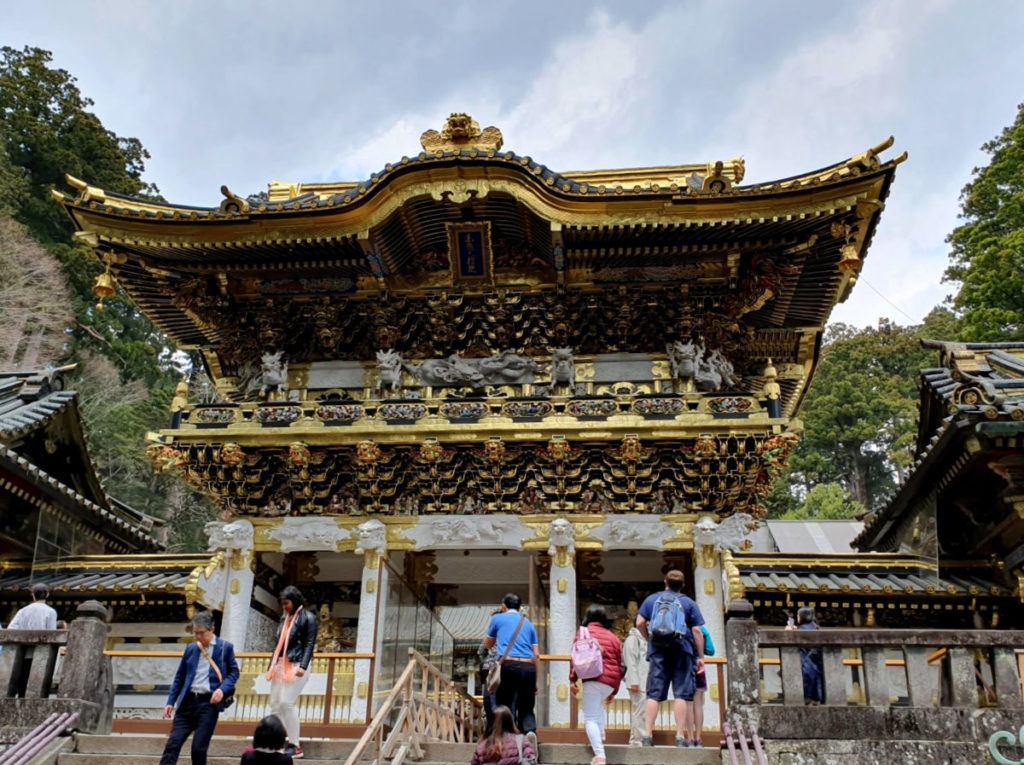
Futarasan Shrine is near Toshogu Shrine. It was founded in the 8th Century by Shodo Shonin who also founded Rinnoji Temple. The shrine is dedicated to the deities of Nikko’s three most sacred mountains. The spring water and sacred tree in the complex are popular as they are believed to give good luck.
Nikko Edo Wonderland
Edo Wonderland Nikko Edomura is located quite close to the town of Nikko and is a great option for a half to full-day visit. A free bus service departing from Nikko Toshogu Shrine (opposite Tsurukame Daikichi) will take you directly to Edo Wonderland. This service operates about four times per day.
Edo Wonderland takes you back in time to the Edo Period and is a great hands-on way to experience the period. The effort that has been put in to ensure historical accuracy is very impressive.
We definitely recommend that you take the opportunity to dress in period costumes, and it is great to choose whether you want to be a farmer, samurai, lord and many more options! As you walk through the village your costume inspires a level of interaction which is lots of fun.
There are many traditional performances to enjoy, including an Oiran courtesan show. It was all in Japanese but we still enjoyed it and it was definitely a comedy act! You can also try your hand at traditional arts and crafts for small additional fees. We really enjoyed cooking our a rice cracker on a brazier, creating our own woodblock pictures as well as learning how to shoot arrows on horseback (simulated..)! Those swords were not just for decoration… We also really enjoyed the ninja show ?.
Click here to check out and book your Edo Wonderland tickets through Klook
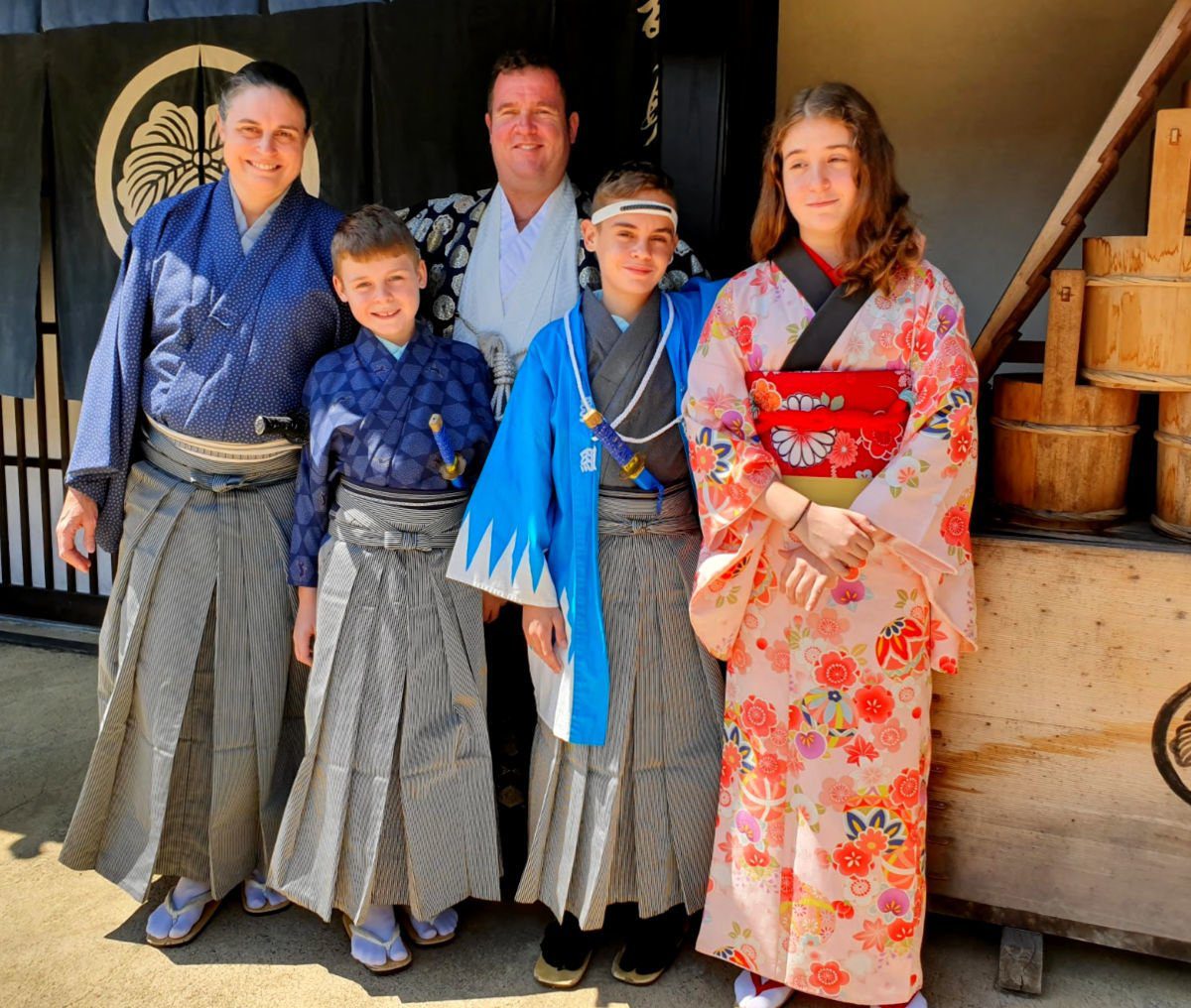
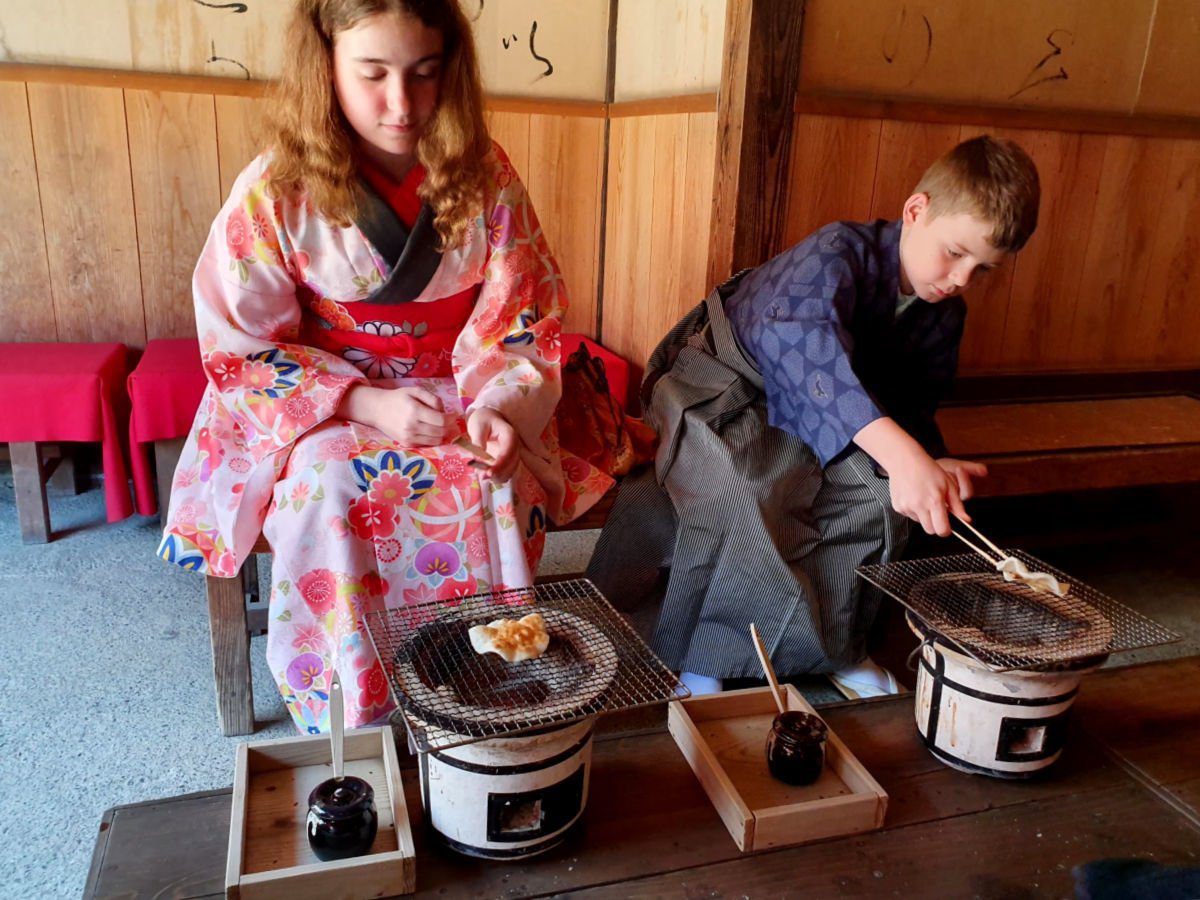
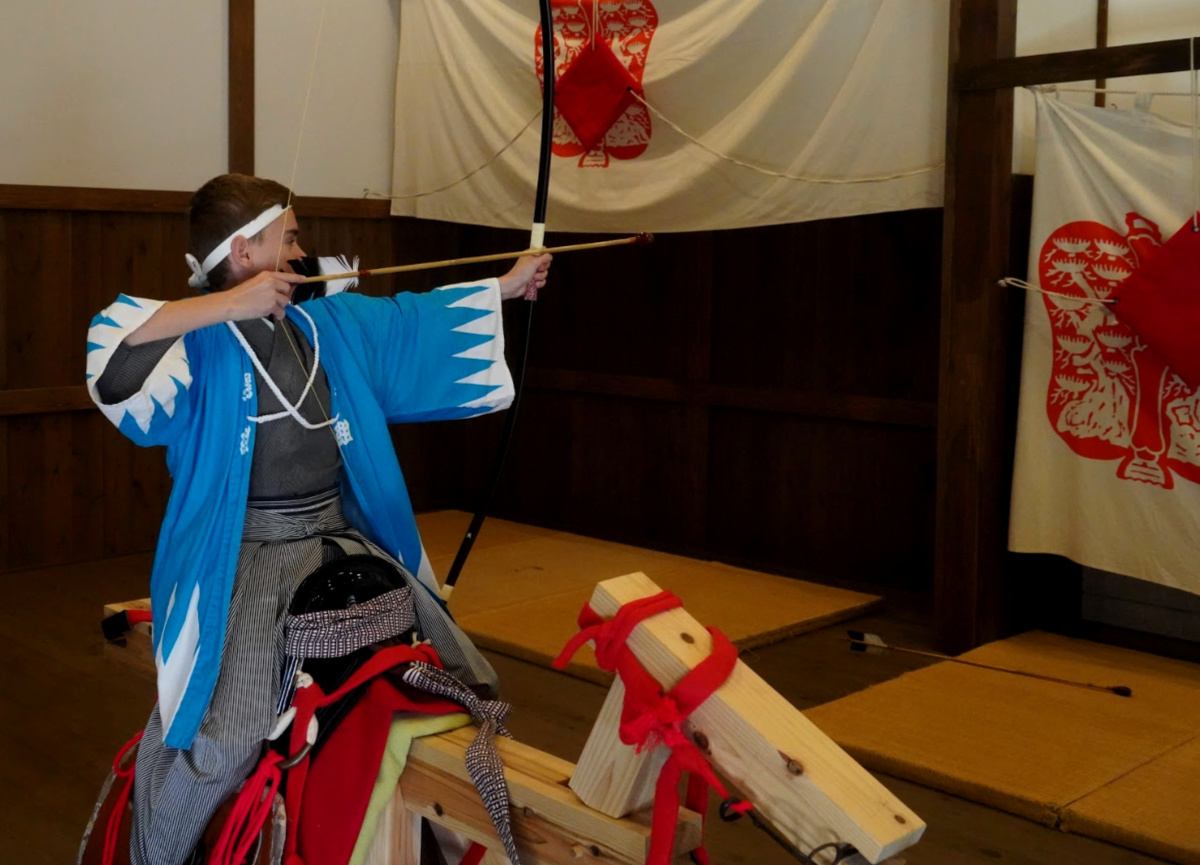

Join the Japan Travel Planning Facebook Group

Disclaimer: This article contains affiliate links. If you book after clicking on one of these links then we may receive a small commission at no extra cost to you.
Tony Sutherland-Smith is the co-founder and key contributor to Pretraveller.com, where his extensive knowledge and passion for travel shine brightly. With a special focus on Japan and South Korea, Tony brings a wealth of practical information and insights to the table, especially regarding staying connected while abroad. His expertise in navigating the complexities of SIM cards, pocket WiFi, and eSIMs has made him an invaluable resource for travellers seeking seamless digital connectivity on their journeys.
Tony’s approach to travel writing is deeply rooted in offering reliable, detailed, and up-to-date information, making him a trusted figure in the travel community. Whether discussing Tokyo’s neon-lit streets, Seoul’s cultural richness, or the technicalities of staying connected in these fast-paced destinations, his articles reflect a combination of thorough research and personal experience.
At Pretraveller.com, Tony’s contributions go beyond just sharing travel tips; they are about enriching the travel experience of his readers. His guidance is tailored to empower travellers, helping them navigate foreign lands confidently and stay connected with the world, no matter where their adventures take them. Join Tony on Pretraveller.com as he continues to explore the nuances of travel in Japan and South Korea and offers valuable insights for the modern, connected traveller.

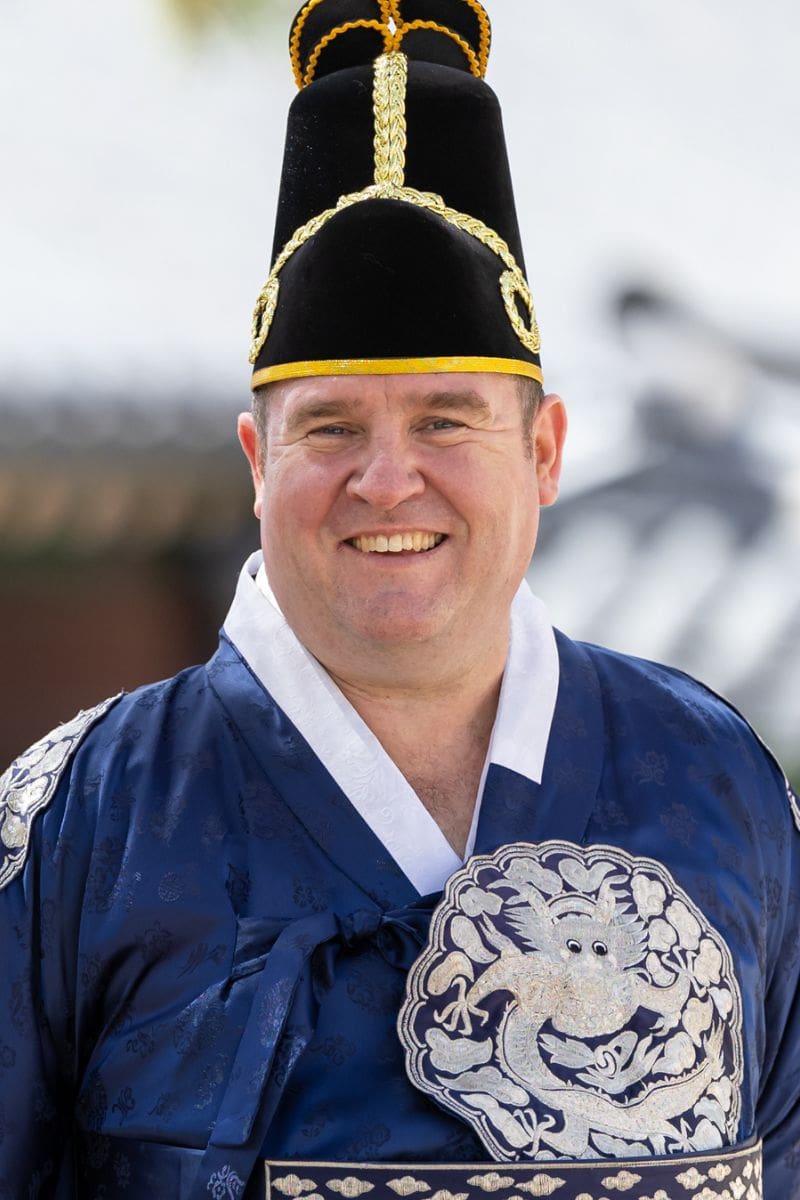
Thank for a wonderful review! With the activities you did at KAI Nikko, are they available to the public?
Faye, if you are referring to the activity to make the coaster and the tap dancing, they are only available if you are staying at the resort.